Popular Search
- VIP EVEREST EXPEDITION (8848.86M)
- MT. EVEREST EXPEDITION (8848.86M) - SOUTH
- MT. MANASLU EXPEDITION (8163M)
- MT. AMADABLAM EXPEDITION (6812M)
- EVEREST / LHOTSE DOUBLE 8000'ERS


MT. K2 EXPED
Expedition to the 2nd highest mountain in the world, scheduled for the June - July (Summer) 2024

MT. NANGA PARBAT EXPED
Expedition to the 9th highest mountain in the world, scheduled for June - July (Summer) 2024

VIP & LUXURY SERVICE
VIP and luxury services that elevate mountain expeditions, ensuring unparalleled comfort and bespoke experiences amidst nature's grandeur

Explore all 14 peaks above 8000m.

Preparation peaks for 8000m expedition.

If you are a beginner and looking for high-altitude experiences.

Conquer the 7 highest peaks of 7 continents.

Training for expedition in high-altitude experiences.
Expedition success rate
Climbers On The Top Of 8000ers
Climber summit rate
Total Expedition over 8000m

Annapurna region has been listed as one of the world’s best trekking destinations and offers an outstanding overview of trekking in the Himalayas. Its winding trails, colorful teahouses, and ever-changing views of the mountains make it the perfect walking destination for adventurers. The verities of flora and fauna along the trails and the trekker-friendly climate make this a truly memorable experience.
The Everest region offers once in a lifetime experience for trekkers and to see the closest view of the world’s highest mountain in the world Mt. Everest. The unique combination of outdoor adventure, vast glaciers, local culture, and beautiful villages along the trekking trails makes this one of Nepal's most popular trekking areas. This region can be considered a trekker’s paradise as it offers many trekking routes.

Langtang Region

Manaslu Region

Kanchenjunga Region

Makalu Region

Rolwaling Region

Karakoram Region

Tunc Findik
Been with Seven Summit Treks for many years, done all 8000ers ! Services are perfect !! Recently joined Cholatse Expedition - Summit Success

Lukáš Jasenský
Czech republic.

Sofie Lenaerts

Brad Johnson

Mohamed H. Al Khalifa
Seven summits are the best! Very professional highly recommended and fun people to work with.. 👏

Recent from

Mountaineering Degree students embark on Gyaji Kang (7038 m) Expedition

Everest route opens to Camp IV
@sevensummittreks.

Our newsletter
Sign on to the Seven Summit Treks newsletter for our latest news,updates & annnoucements.
Privacy of your data is important to us and we always keep your data received from the website secure. You can unsubscribe from our newsletter whenever you want to. You can also view our privacy policy here in detail .
For Expeditions
- Easy (E): Climb requires one-day climbs, or a multiday climbs with non-technical elements.
- Moderate (M): Either a serious one-day climbs, or a multiday climbs with some technical elements. Requires an average level of physical fitness.
- Difficult (D): Multiday climbs with some moderately technical elements. Requires an above average fitness level and high level of stamina.
- Hard Difficult (HD): Multiday, Highly technical climb. Requires high level of physical fitness and stamina.
- Very Difficult (VD): Multiday, Extremely technical climb. Requires very high level of Physical fitness and stamina.
For Trekking
- Light: Light walking and generally level hiking that is good for most fitness levels. During these trips, hill-walking experience is desirable.
- Moderate: Trek has various types of moderate to difficult terrain, including rough trails and normally 3 to 5 hours a day. Requires an average to above average fitness level.
- Moderate+ : High altitude treks above 3000 meters or in fairly difficult terrain- normally 4 to 6 hours a day. Requires an above average fitness level and high level of stamina.
- Extreme: These high altitude treks or passes are known to be the most strenuous and has difficult terrain and conditions. These treks may require a degree of mountaineering skills and you capability of carrying on normally at an altitude of 4000-5600 meters. Daily walking is 5-8 hours approx.
Mardi Himal trek. A wonderful trek ideal even for beginners. Wonderful views, great facilities. Our choice for this trek was through our honeymoon. Seven Summit Treks organized and prepared everything. Sherpa Tashi and porter Nima were great. We could talk, they always prepared everything. I have been in contact with the guys from Seven Summit Treks since the expedition to Makalu and I know that I can rely on them. Thank you for your help and wonderful experience. And see you at the next event.
Our first co-operation was in 2013 in Pakistan with Arnold Coster expeditions and Sevensummittreks towards the Gasherbrum. After that, we continued to work together on expeditions towards Everest, Makalu, Lhotse, Manaslu (winter), and AmaDablam. For me, SST is a very professional company with a lot of experience and knowledge. We have full confidence in their capabilities and appreciate their flexibility. I would like to thank them for all those years of cooperation and I look forwards to new adventures in Nepal and Pakistan.
I have been on many expeditions in Nepal over the years, most of them I organized with friends and used Seven Summit Treks only for their base camp services with great service! This year none of my friends were available to climb in Nepal in the Autumn season so I contacted SST and decided to sign up for the Mera Peak and Baruntse expedition. SST organized everything and provide me with a personal climbing Sherpa for the entire trip. Throughout the entire trip, everything was taken care of by SST, including lodging, tea houses, and meals. At Baruntse base camp I had a nice private tent and the cook and kitchen staff always had smiles and cooked great meals. My Sherpa (Jangbu) was great and we became close friends and climbing partners. Jangbu was always there with a smile, a very strong climber, always wanting to help in any way he could. There was plenty of time to decide how and when we were going to make a summit push based on the weather. We had fantastic summit days on both peaks and finished the trip crossing the Amphu Labste pass into the Khumbu Valley staying each night in nice lodges with all meals included. I would highly recommend using SST for any expedition that you want to go on. Thank you Seven Summit Treks for a great trip and your attention to detail!!
Seven Summit Treks

- See all photos
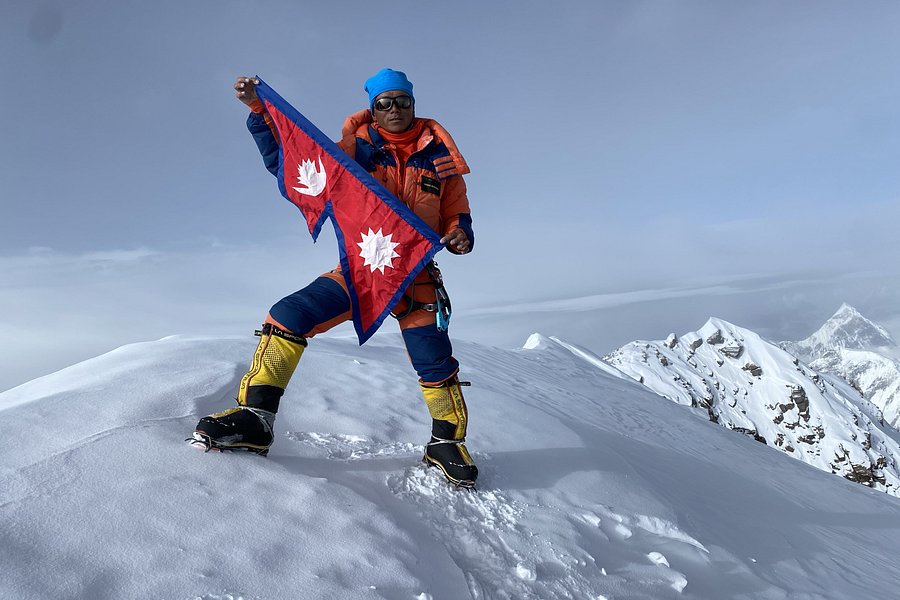
Similar Experiences

Most Recent: Reviews ordered by most recent publish date in descending order.
Detailed Reviews: Reviews ordered by recency and descriptiveness of user-identified themes such as wait time, length of visit, general tips, and location information.
Seven Summit Treks - All You Need to Know BEFORE You Go (2024)

- Best Hikes In The World
- Appalachian Trail
- European Hikes
- Nepal Hikes
- Patagonia Hikes
- See All Hikes
- Mount Kenya
- Mount Kilimanjaro
- Mount Toubkal
- See All Mountains
- South Africa
- New Zealand
- Switzerland
- United Kingdom
- Packing Lists
Seven Summits – The Complete Guide (With Comparison Table)
Mountains , Seven Summits
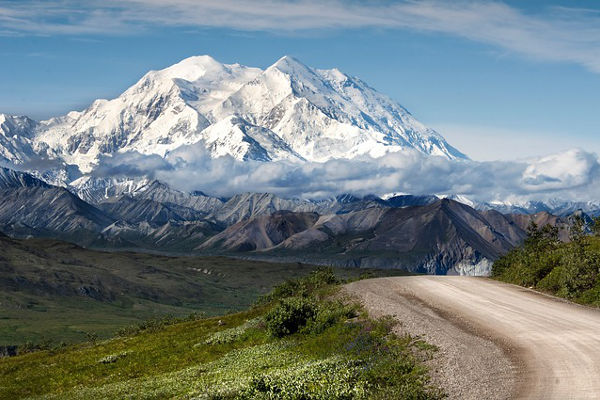
Seven Summits is a coveted mountaineering challenge that sees climbers tackle some of the world’s tallest mountains in order to reach the highest peaks located on each of the seven continents.
Despite being no small feat, over the years there has been a rise in popularity of this prestigious challenge as an increasing number of people make an attempt the reach the peaks.
There is some contention as to which summits are part of the list due to differing interpretations of the boundaries of the continents, so for clarification purposes, we have based our guide on Messner’s version of the 7 summits as this uses Puncak Jaya rather than the lower elevated Kosciuszko, as Australasia’s highest summit.
Seven Summits - Comparison Table
7 summits - detailed overview, 1. mount everest (8,848m/29,028.9ft).
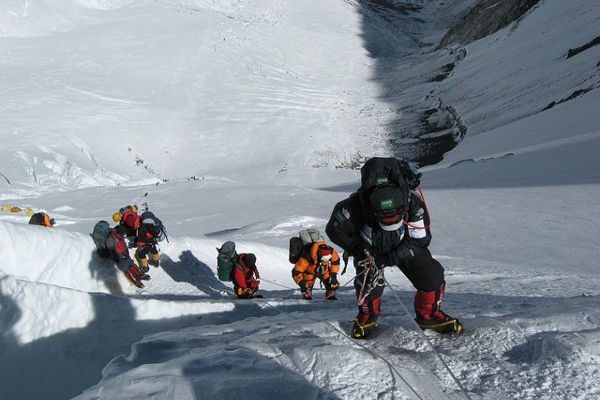
As the highest mountain on earth and head of the Eight Thousanders , reaching the summit of Mount Everest is often considered to be the ultimate achievement for mountaineers and because of the cost of an Everest expedition as well as the lengthy duration, it is for many people a once in a lifetime experience.
Everest is situated in the Mahalangur Himal sub-range of the Himalayas on the border of Nepal and Tibet and even though there are a number of recognised routes to the summit, the two most common approaches to the mountain begin from Nepal in the South, and Tibet in the North.
The South Col route which takes the South East Ridge to the summit is known as the standard route. Most tour operators opt to use this route as the Base Camp is very well established and allows climbers access to all the facilities and comforts that it has to offer. It is also technically easier than the North Col route.
The North Col route takes the North East Ridge to the summit is increasing in popularity but remains a little less travelled as the weather conditions tend to be a bit tougher than the South Col route and the Base Camps are not as equipped as the south side.
Mount Everest is best climbed in the spring months of April to May. Though summer may seem the obvious choice, it is monsoon season so heavy rain can hinder your progress.
1st Summit, Success Rates & Deaths
- First recorded successful summit made in 1953 by Edmund Hillary and Tenzing Norgay
- Approximately 800 people attempt the summit every year and of those roughly 60% successfully summit
- From 1953 to date there have been 297 deaths recorded on Everest. (Find more facts about Mt Everest here)
Costs, Technicalities and Length
- Costs vary depending on the guide company you use and can range from US$30,000 upwards to US$80,000
- Technical at points - must be able to use crampons , an ascender, be able to rappel with a backpack on, and be in top physical shape. Previous high altitude climbs highly recommended
- Usually a 2-month expedition
If you are attempting the 7 summits challenge then consider leaving Mount Everest until the end. It is best done with prior high altitude experience and you will build up essential mountaineering skills by attempting the other summits beforehand.
2. Mount Aconcagua (6,961m/22,837ft)
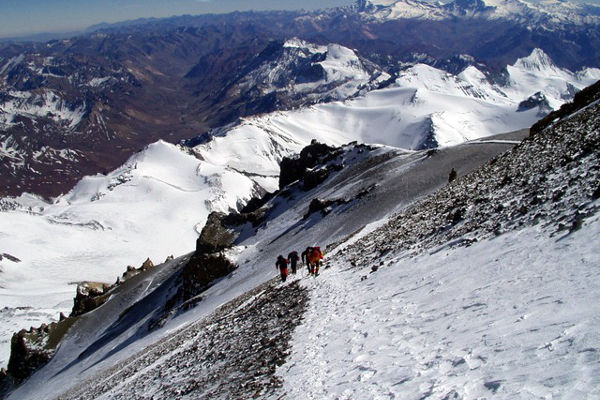
In order of elevation, Aconcagua is number two on the 7 summits list and is the highest peak outside of Asia as well as the highest in the Southern Hemisphere. It is located in the Andes mountain range of Argentina .
Aconcagua is often considered to be one of the easiest climbing peaks for its height as it is not particularly technical and because of this is a popular mountain to climb. The altitude is often underestimated though and care should be taken to acclimatize properly.
There are three main routes up Aconcagua , the most popular being the Normal Route which takes the North West Ridge to the top. It is a non-technical, ‘trekking’ route and is popular with the guide companies.
The Polish Traverse Route is also non-technical but you are more likely to need to use crampons and an ice axe than on the Normal Route. It is also slightly longer than the Normal Route.
Not to be confused with the Polish Traverse Route, the Polish Glacier Route is substantially more technical and requires mountaineering skills to ascend so is more suited to experienced climbers who are proficient with equipment such as an ice axe and short rope.
Climbing season for Aconcagua is during the summer months from 15 th November through to 31 st March every year, with the peak times being from mid-December to the end of January.
- Matthias Zurbriggen made the first recorded successful summit in 1897 via the Normal Route.
- An average of 3,500 people attempt the summit every year but only about 40% reach the top
- Aconcagua has earned itself the nickname of ‘Mountain of Death’ with an average of three deaths per year
- You can expect an expedition to cost anything from about US$3,500 to US$5,000 or more
- Knowing how to use crampons and an ice axe is essential and you should be in top physical shape with an excellent level of aerobic fitness
- Aconcagua expeditions typically take just less than three weeks
Aconcagua is often used as a warm up in the 7 summits challenge. Consider tackling this one or Mount Elbrus, after summiting Kilimanjaro.
Check prices to Trek Aconcagua with our trusted operator.
3. Denali (6,194m/20,310ft)
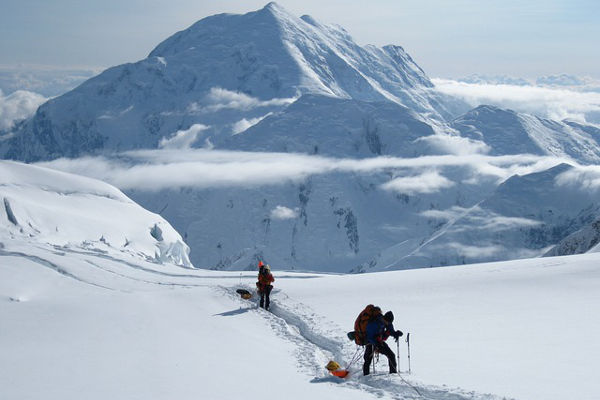
Number three on the 7 summits list in terms of elevation is Denali . This impressive mountain is situated in the Alaska Range of mountains in the US state of Alaska . It is the main feature of the Denali National Park and its proximity to the Arctic Circle means that sub-zero temperatures and extreme cold weather are to be expected year round.
The West Buttress Route is the most commonly used path to the summit of Denali as it is the least technical and has significant infrastructure set up along the way in terms of Base Camps and medical evacuation availability.
Muldrow Glacier Route is probably equal in terms of technicality to the West Buttress Route but is not quite as popular as climbers have to hike in instead of fly to Base Camp and so is generally a longer expedition.
The West Rib Route is a step up in difficulty from the West Buttress route as it is considerably steeper, and as there is a greater depth of snow to get through the risk of an avalanche is more prominent.
It diverges from the West Buttress route at Ski Hill point and then takes the North East fork of the glacier to reach the summit.
The most difficult route along Cassin Ridge is reserved for very experienced climbers as in addition to facing adverse and extreme weather conditions like all the routes on Denali, it is a technical climb and requires sustained periods of rock and ice climbing at altitude.
Denali is best attempted in the early summer months from May through to July.
- The first verified ascent to Denali’s summit was made in 1913 by climbers Hudson Stuck, Harry Karstens, Walter Harper, and Robert Tatum.
- Just over 1,000 people attempt the summit each year and of those, approximately half reach the peak.
- An average of 3 people a year perish on Denali
- Costs range from US$6,500 upwards to US$10,500
- Use of crampons and mountaineering equipment is required and skill in glacier travel and crevasse rescue is essential for this climb
- Denali is usually attempted over 3 weeks as extra days are generally allowed to accommodate bad weather conditions
It is advisable to prepare for Denali by climbing Mount Elbrus and Aconcagua beforehand to be adequately prepared.
4. Kilimanjaro (5,895m/19,341ft)
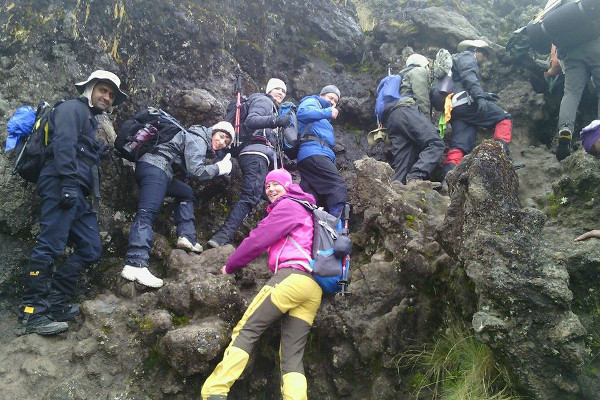
Due to the non-technical nature and only moderate difficulty of the climb, the iconic Kilimanjaro is often one of the first extreme-altitude mountains that climbers attempt.
The allure of being one of the 7 summits combined with its location in beautiful Africa makes Kilimanjaro a very popular mountain indeed. The extreme altitude should not be ignored but with adequate preparation, Kilimanjaro is very 'summitable'.
Kilimanjaro has a multitude of routes that access the summit, but there are five which are consistently used and considered to be the most popular.
These are Machame (the most popular), Lemosho , Rongai , Northern Circuit, and Marangu Routes . Choosing a route to the summit generally depends on how much time you want to spend on the expedition, how much other foot traffic you want to encounter, and if you want to overnight in hut accommodation instead of camping over the expedition.
Due to its proximity to the equator, Kilimanjaro experiences relatively stable weather and can be climbed year round. Generally, it is best to climb Kilimanjaro between June and September and it is best to avoid the rainy season of April and May, as well as November.
- Hans Meyer and Ludwig Purtscheller made the first recorded successful summit in 1889
- Approximately 35,000 people hit the slopes of Kilimanjaro each year and the summit success rates increase as the number of days on the expedition increases with 8-day trips seeing an average success rate of 85%
- It is estimated that there are between 3 and 7 deaths per year on the mountain
- Costs can range upwards from about US$3,000 to US$6,000
- Because you spend a good portion of the day hiking up increasing altitudes, you need to be in good physical condition to summit Kilimanjaro
- Though it is better to join one of the longer 7 or 8-day expeditions, the summit can be reached on a 5-day expedition
Kilimanjaro is a great mountain to begin your 7 summit challenge.
Check prices to Climb Kilimanjaro with our trusted operator.
5. Mount Elbrus (5,642m/18,510ft)
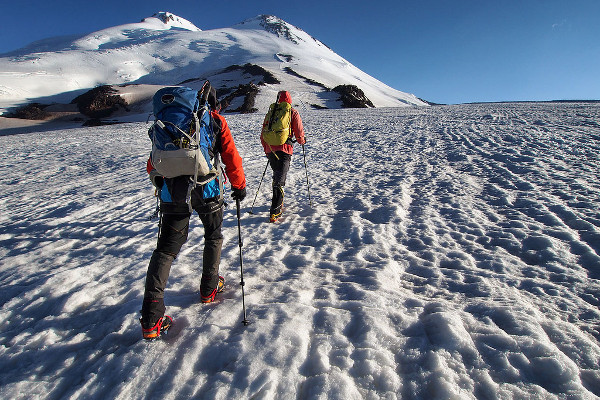
Mount Elbrus is number five in elevation on the 7 summits list. It also makes it on to the World's 7 Volcanic Summits list.
It is based the Caucasus Mountain Range in Southern Russia. Though there is some contention as to how the Caucasus Mountains are distributed between Europe and Asia, Elbrus lies north of the Caucasus watershed which is deemed - by most of the relevant authorities - to be the borderline between the two.
Elbrus has two summits, both of which are dormant volcanic domes. The west summit is the taller of the two and is the one that puts Elbrus on the map of the 7 summits.
There are two main approaches to the summit of Elbrus, the South Side approach and the North Side approach.
The South Side approach sees a much greater summit success rate in comparison as there is better infrastructure along the route and it is not quite as demanding so is generally the favoured route to reach the summit.
The North Side involves a glacier crossing so climbers should be comfortable with short rope techniques and crevasse rescue.
The main climbing season on Elbrus is during the summer months from June to September with peak season in July.
- First successful ascent to the west summit of Elbrus was in 1874 by a British expedition comprising of F. Crauford Grove, Frederick Gardner, Horace Walker, and Peter Knubel
- The summit success rate for the South Side approach is estimated to be as high as 80 -90% whilst the North Side is much lower at about 50%
- Due to the great number of people who climb the mountain each year, there are as many as 25 deaths annually. These are generally the result of bad weather conditions or altitude sickness
- Cost wise it can be as little as US$1,000 and range upwards to US$6,000 or so
- Basic mountaineering skills along with a solid aerobic fitness level is a must
- A typical expedition on Mount Elbrus will take approximately a week
Mount Elbrus and Aconcagua are often done early on in the 7 summits challenge. Consider tackling this one before moving on to Denali and Mount Vinson.
6. Mount Vinson (4,892m/16,050 ft)
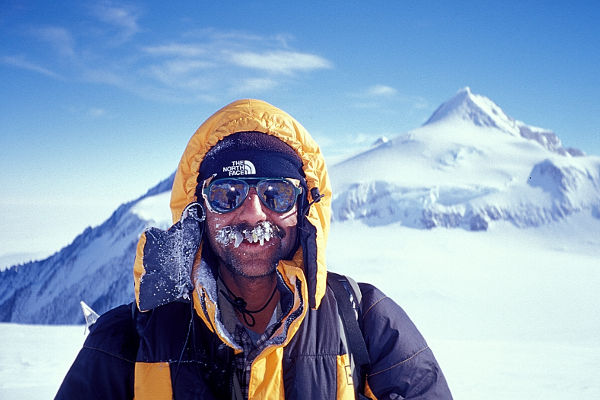
Vinson Massif is the highest peak in Antarctica . It is based in the Sentinel Range of the Ellsworth Mountains and is the sixth highest of the 7 summits.
Due to its isolated location, it is the ‘youngest' of the 7 summits as it was the last one to be successfully summited, and the popularity of climbing this mountain is mainly attributed to its status as one of them.
The remote location and stark polar landscape make for a surreal and breath-taking expedition to the summit. For most people, the Mount Vinson expedition will certainly be one of the most remote climbs that they undertake.
While the wilderness is truly spectacular the weather is often unpredictable and extra days are usually incorporated into an expedition to allow for the possible bad weather which may delay flights or restrict movement out of base camps.
The majority of climbs go via the western side of the massif from the Branscomb Glacier and make use of the various base camps along the route.
The best time to climb Mount Vinson is in the summer months between December and January when temperatures are slightly warmer and there are long sunlight hours.
- The first recorded ascent to Mount Vinson’s summit was in 1966 by an American team led by Nicholas Clinch
- Only about 1,200 people have climbed Mount Vinson
- There have not been any recorded deaths on the mountain
- Because of the logistics involved in getting there, it is one of the more expensive climbs and can easily cost between US$30,000 up to US$50,000
- Mount Vinson is not particularly technical though you must have good basic mountaineering skills. More important is to take care of your body in the extreme weather conditions
- Usually, an expedition will be around three weeks but depending on the favourability of the weather conditions it can take more or less time
Mount Vinson is best done later on in the challenge as a precursor to Mount Everest. By now you should be better-prepared skills wise to tackle Everest but the harsh weather conditions do make Vinson challenging too.
7. Carstensz Pyramid / Puncak Jaya (4,884m/16,024ft)
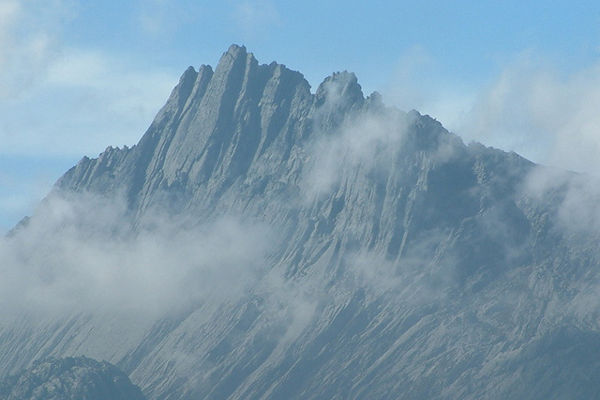
The Carstensz Pyramid, also known as Puncak Jaya is the lowest elevated mountain of the 7 summits on the Messner version list. It is the highest summit of Mount Carstensz in the Sudirman Range of the western central highlands of Papua Province in Indonesia.
The Bass version of the 7 summits includes Mount Kosciuszko, which is located in Australia as the final summit. But as this is lower than Carstensz and excludes the rest of Australasia in the running we have based our list on the Messner version. It is to be noted though that most climbers will attempt both of these summits to make sure that they have covered all bases of the challenge.
The Carstensz Pyramid rises up from an exotic rainforest landscape to expose a mountaintop covered with glaciers. It is unique in the sense that it is the only one of the 7 summits that requires technical rock climbing skills as opposed to the alpine mountaineering skills required on the other summits.
There is one main route to the summit which is known as the Normal Route or Harrer’s Route. Most guide companies will fly their clients into Base Camp on a helicopter and from Base Camp, it is usually a 12 – 14 hour round trip to the summit. Alternatively, climbers can hike in from Ilaga to Base Camp though this is the less favoured option of the two due to constant rainfall on the trek through the rainforest to the Base Camp.
Due to its proximity to the equator, the weather is relatively stable throughout the year and when to climb Carstensz Pyramid generally relies on when your guide company is taking the expedition.
- Carstensz Pyramid was successfully summited for the first time in 1962 by Heinrich Harrer, Philip Temple, Russell Kippax, and Albertus Huizenga
- Costs average at about US$23,000 for the helicopter option but are less if trekking in
- Rock climbing skills are essential and Carstensz is known to be a technical climb. Having good upper body strength is a must, as well as a good overall fitness
- The expedition is generally a week for the helicopter option as several days are spent acclimatising and resting before the summit day
Carstensz Pyramid is often done as the final summit of the challenge in conjunction with the Mount Kosciuszko hike to cover bases.
Three Poles Challenge
Just in case conquering the 7 summits is not quite adventurous enough, there is also the Three Poles Challenge which sees adventurers reach the North Pole, the South Pole, and the summit of Mount Everest.
Considering the remoteness of each of the poles and the close proximity of the South Pole when on the Mount Vinson expedition, the Three Poles Challenge is often seen as an extra title to bag, leaving just the North Pole as the final marker point.
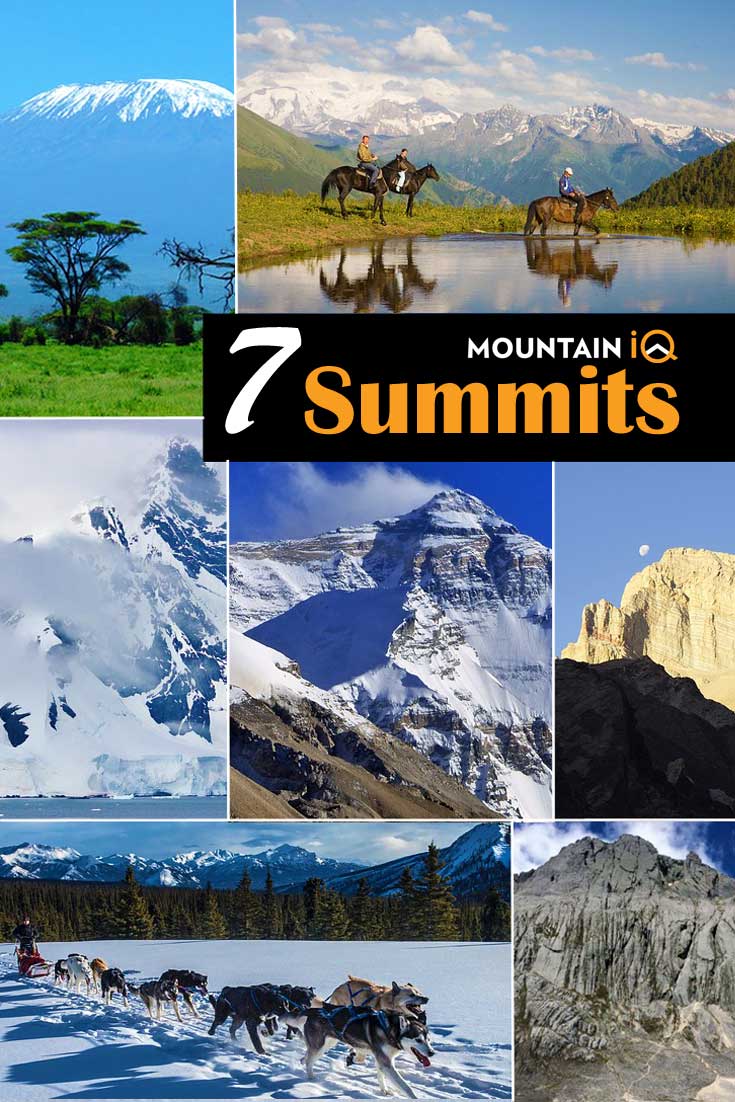
About the author
Mark Whitman
Mark has trekked extensively in Asia, Europe, South America and Africa. He founded Mountain IQ in 2014 with the sole aim to be the best online information portal to some of the most popular mountain destinations around the world. When not writing for Mountain IQ, Mark is out exploring the outdoors with his wife!
Leave a Reply
Your email address will not be published. Required fields are marked
good day.I would like to inquire about the availability of a space for 2021 Denaili expedition.cost and list of gear needed.Thanks in advance
Hi Simon, unfortunately we don’t operate the Denali expedition.
I want climbing monut Kilimanjaro. And carstonsz. How much cost
Hi Avdhesh, I recommend checking out Skyhook to get connected with a local operator: https://www.skyhookadventure.com/go/climb-kilimanjaro
We work with local guides to offer great value adventures at unbeatable prices
- / Expeditions
- / Seven Summits
Seven Summits

The ultimate adventure. Climb with the most experienced operator on the mountain. Read More
Commit to a pre-acclimatisation prior to arriving in Nepal and join our accelerated Everest Fast Track program to climb in just 40 days! Read More
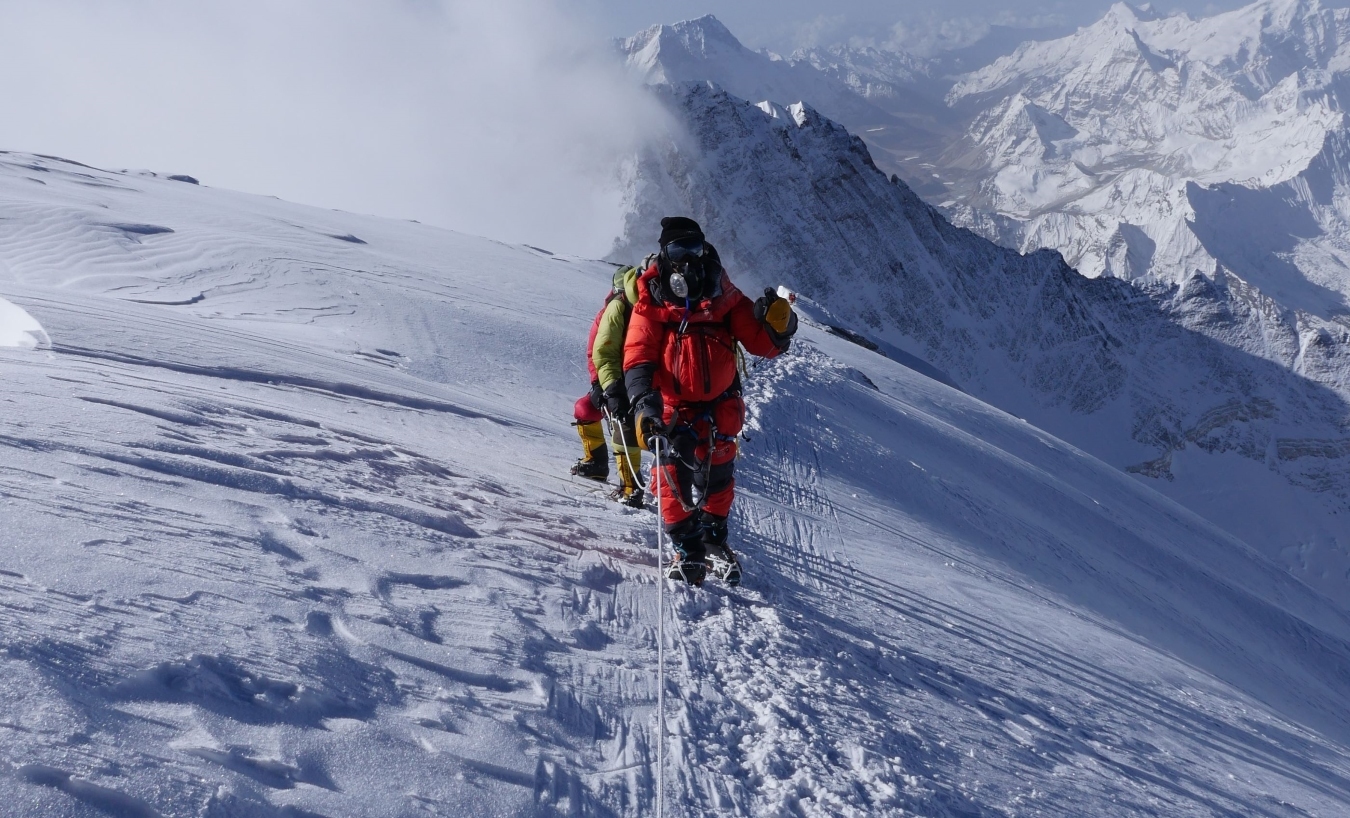
Increase your chance of success and ascend Everest with the highly personalised and flexible Private Everest expedition. Read More
Realise the incredible dream of reaching the summits of Mounts Everest and Lhotse on one expedition! Read More
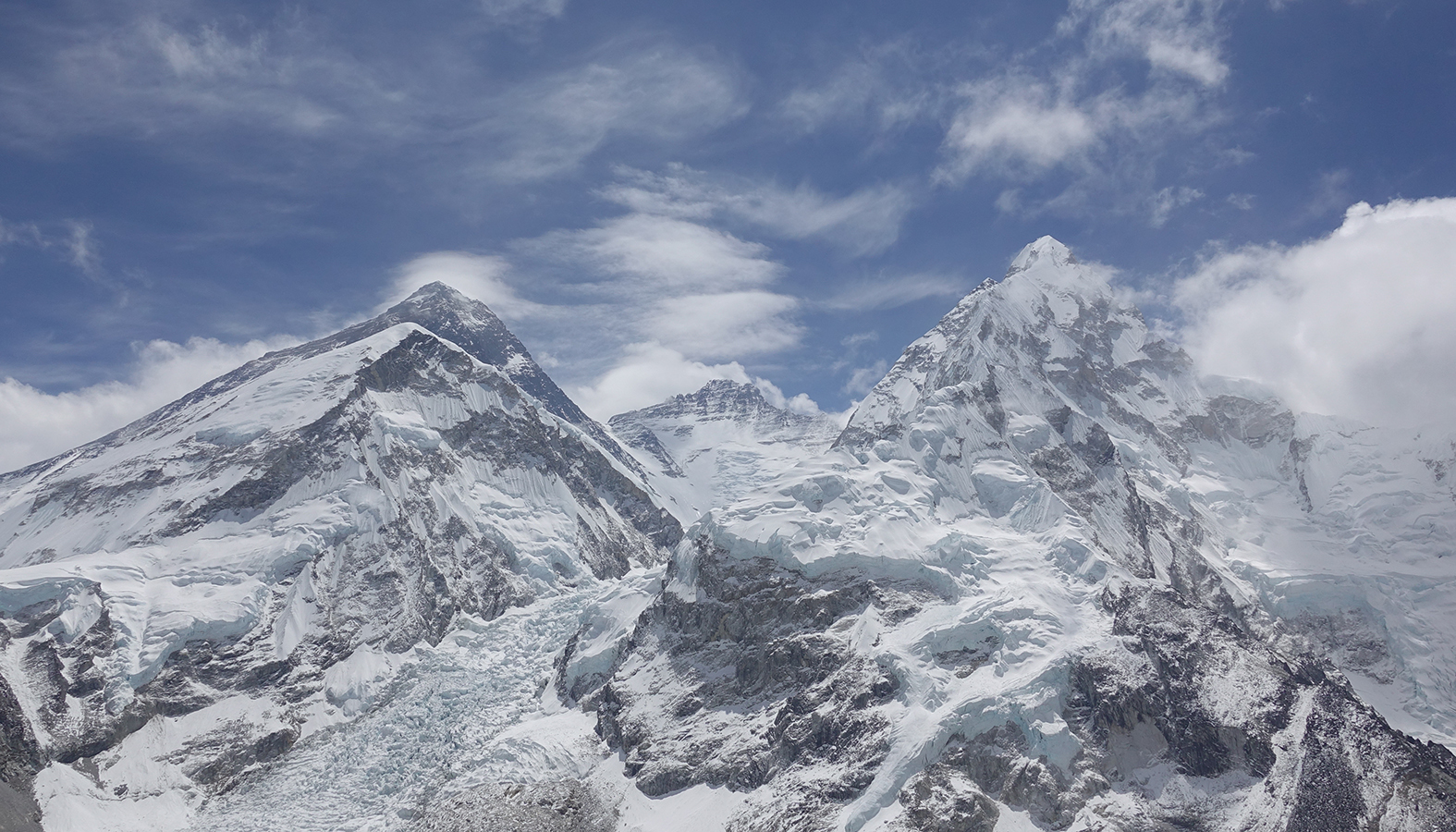
Climb Everest, Lhotse and Nuptse to claim the world's ultimate high-altitude mountaineering prize - the Triple Crown. Read More
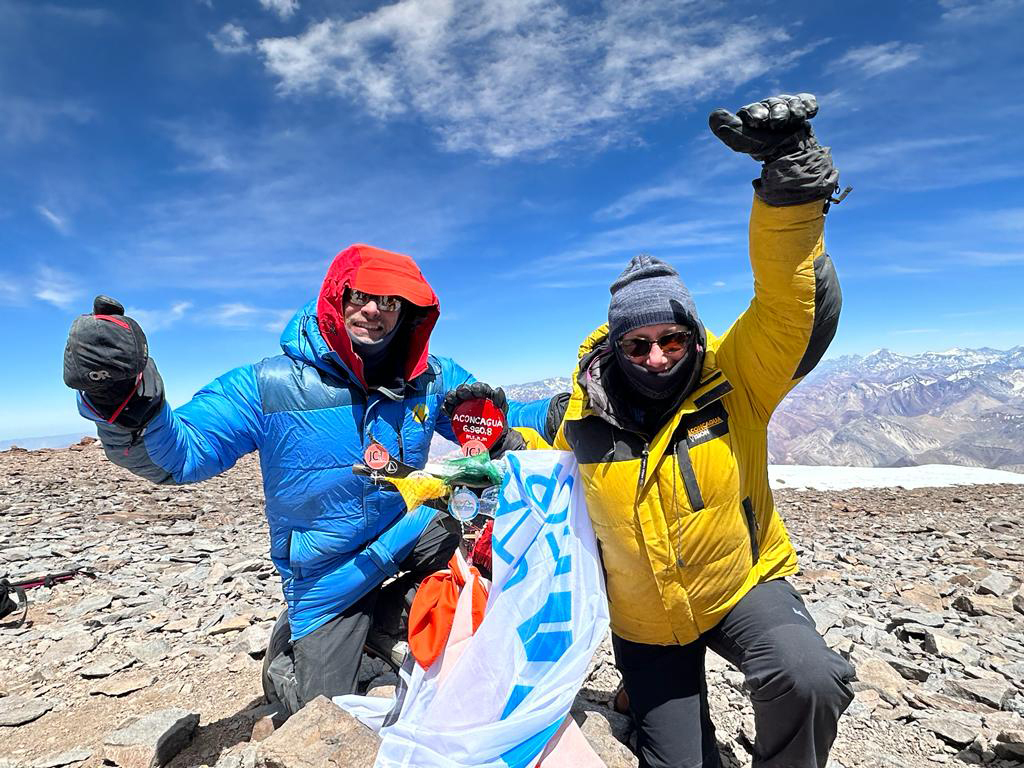
Climb South America's highest peak Aconcagua, the perfect choice for those wishing to build experience in high-altitude mountaineering. Read More

Climb North America's highest peak, Denali, via the West Buttress Route. A challenging 21-day expedition for climbers with solid experience. Read More
Give yourself the best chance to summit this challenging Seven Summit climb on the 25-day Denali Low Ratio departure. Read More

Journey to Russia and climb continental Europe's highest peak, Mount Elbrus in this short but exhilarating introductory level climb. Read More
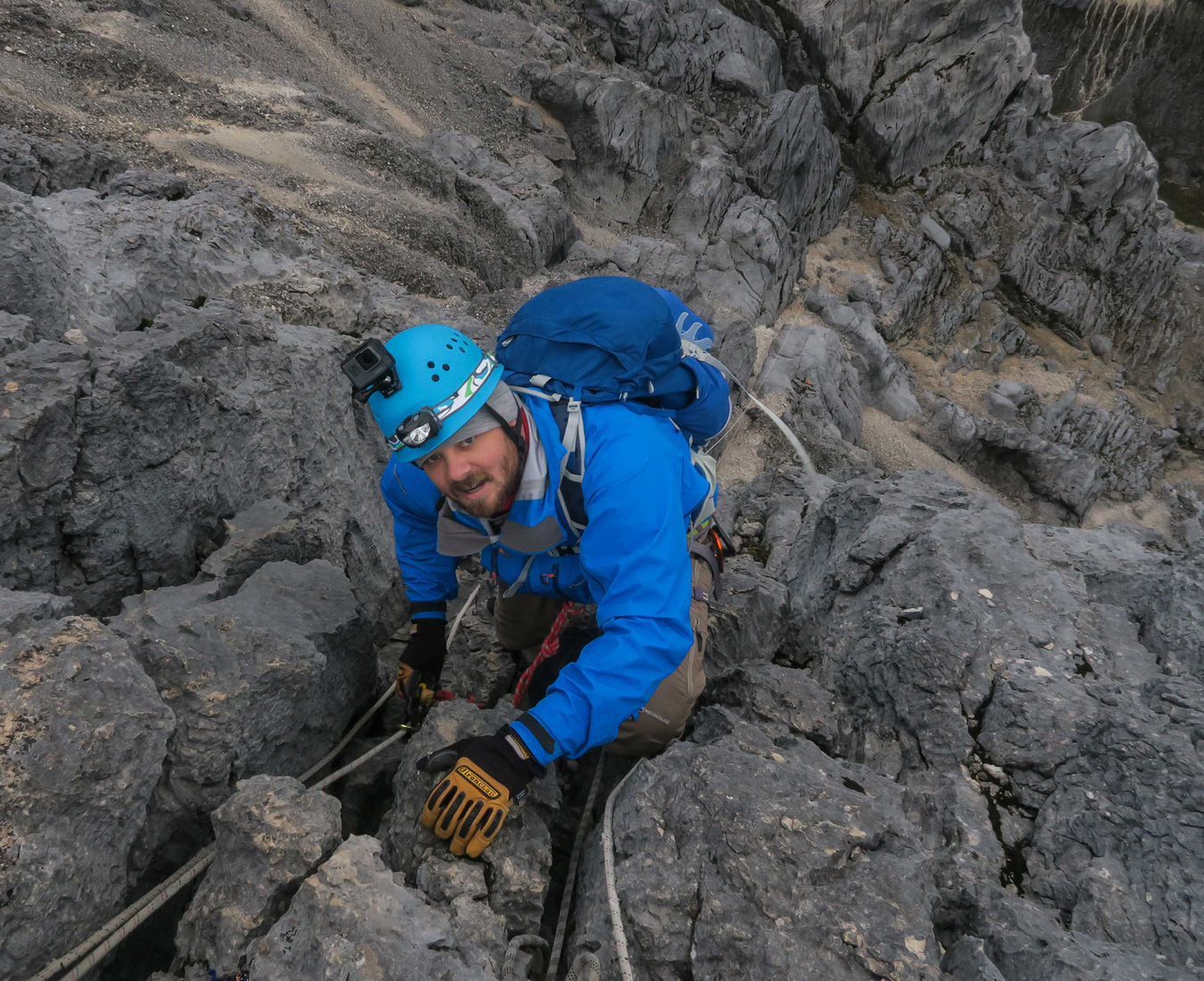
Climb with the pioneers of Carstensz Pyramid expeditions on this remote fly in/fly out Western Papua Seven Summits peak. Read More

Journey deep into the remote Antarctic interior on this expedition to climb the Seven Summits peak, Mount Vinson. Read More
A climb to the summit of Mt Kilimanjaro is a manageable and enjoyable first peak to climb with the support of our fantastic crew! Read More
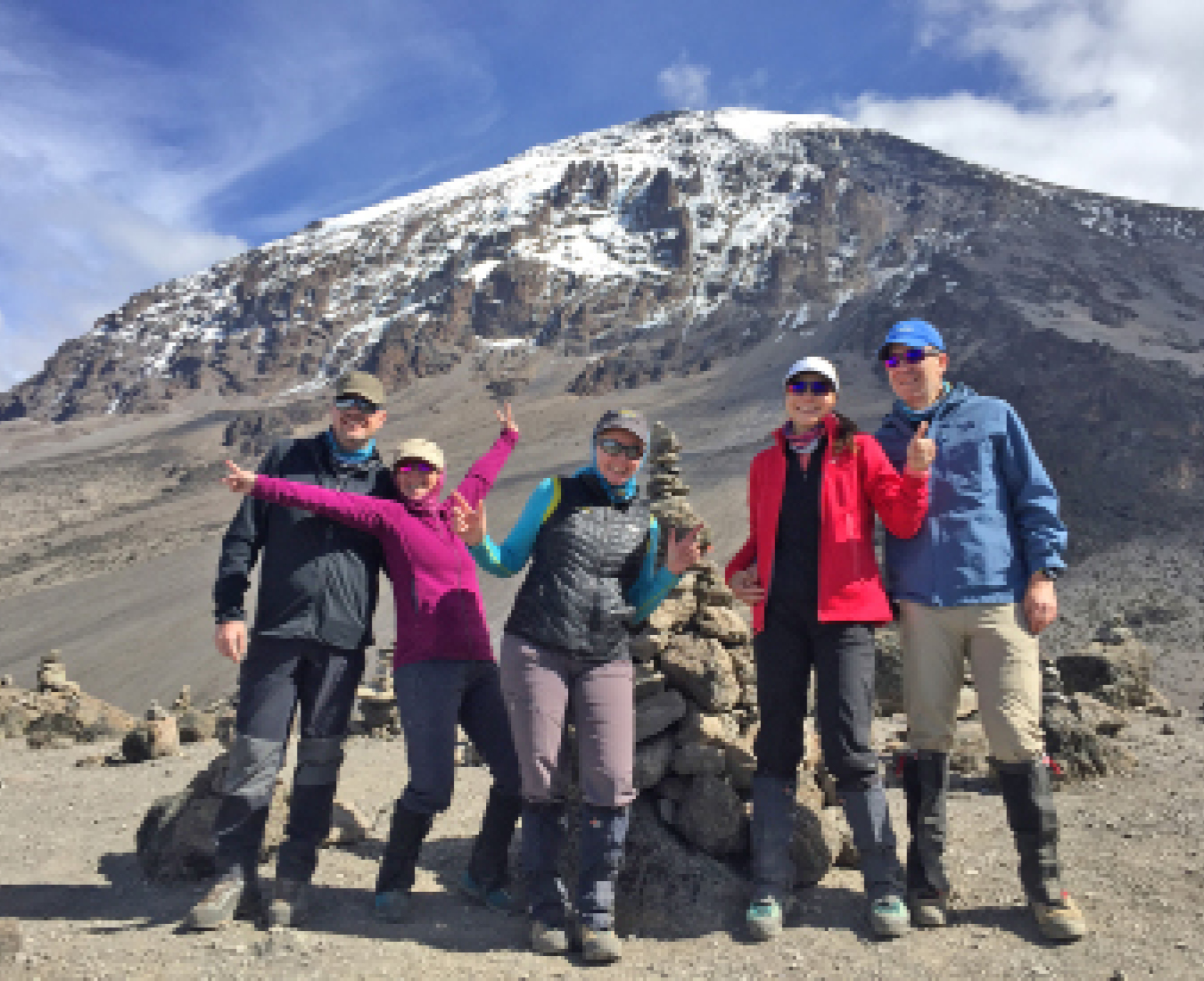
Luxury private treks to climb Seven Summits peak Mt Kilimanjaro with options to safari in the Serengeti & Ngorongoro Parks. Read More

Seven Summit Treks
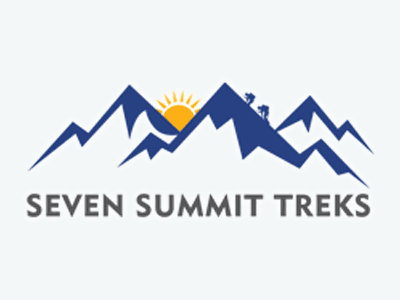
Need an RMI account? Create an account
Register With Us
Already have an account? Sign in
- First Name *
- Last Name *
- Confirm Password *
The password must meet the following criteria:
- At least 8 characters
- At least 1 lowercase letter
- At least 1 uppercase letter
- At least 1 number
- At least 1 symbol (allowed symbols: !?@#$%^&/*()[]{}><,.+-=;)
Keep up to date with information about our latest climbs by joining our mailing list. Sign up and we'll keep you informed about new adventures, special offers, competitions, and news. Privacy Policy
Check Availability
- Number of Climbers

- International
- Mount Rainier
- North Cascades
- Skills Clinic
- Ice Climbing
- Ski Programs
- Women's Expeditions

Seven Summits
- Kilimanjaro
- Climb & Safari
- Vinson Massif
- Latin / South America
- Chile Ski Mountaineering
- Torres del Paine Trek
- Volcanoes - Winter
- Volcanoes - Summer
- Ecuador Seminar
- Cotopaxi Express
- Illimani and Huayna Potosi
- Orizaba & Ixtaccihuatl
- Machu Picchu
- Peru Seminar
- Everest Base Camp Trek
- Everest Base Camp & Lobuche
- Everest Custom
- Summit Climb Programs
- Four Day Climb
- Five Day Climb
- Mount Rainier Weather Information
- Mountaineering Seminars
- Emmons Seminar
- Kautz Seminar
- Muir Seminar
- Paradise Seminar
- Mountaineering Skills
- Crevasse Rescue Skills
- Denali Expeditions
- West Buttress
- Custom Expedition with Dave Hahn
- Alpine Climbing
- Little Switzerland
- Alaska Seminars
- Kahiltna Glacier Seminar
- Ruth Glacier Seminar
- Mount Baker
- North Ridge
- Easton Glacier
- Summit & Ski Descent
- Easton Seminar
- Coleman-Deming Seminar
- Backcountry Ski & Ride
- Leave No Trace Instructor Course
- LNT Level 2 Instructor Course
- Mount Shuksan
- Sulphide Glacier
- Fisher Chimneys
- Shuksan Seminar
- Glacier Peak
- Glacier Peak Climb
- Forbidden Peak
- Private & Custom Climbs
- Custom Climbs
- INTERNATIONAL
- MOUNT RAINIER
- NORTH CASCADES
- Baker Seminar
- LNT Level 2 Instructor & Baker Climb
- LNT Level 2 Course & Baker Climb
- Hyalite Intro to Ice
- Hyalite Intermediate Ice
- Ski Mountaineering
- Mount Baker Summit & Ski Descent
- Kilimanjaro Climb & Safari
- Machu Picchu Trek
- Explore something new with our Adventure Finder
- Mt Rainier Weather Information
- Mt Rainier Cultural Landscape
- Denali Cultural Landscape
- Summit Registry
- Find Your Adventure
- Fitness & Training
- Technical Skills
- Leave No Trace Videos
Sign Up for Our Newsletter
- Why Climb with RMI?
- Responsible Climbing
- Employment Opportunities
- Diversity Equity Inclusion

EVEREST: 29,035'
Embarking on an expedition to Mt. Everest can be the pinnacle of a climbing career, and it deserves all of the personal support and guidance that RMI offers.

ACONCAGUA: 22,841'
Piercing the austral winds with its rocky 22,841’ summit, Aconcagua is the highest mountain in both the Western and Southern Hemispheres.

DENALI: 20,310'
Denali is the highest mountain in North America, surrounded by the massive glaciers and peaks of the Alaska Range and overlooking Alaska’s interior.


KILIMANJARO: 19,340'
Climbing from Kilimanjaro’s rainforests to its glacier-capped 19,340’ summit is simply an unforgettable experience.

MT ELBRUS: 18,510'
Mt. Elbrus is a stunning volcanic peak located in the Caucasus Mountains of Russia, and at 18,510', it is Europe's, as well as Russia's, highest peak.

VINSON MASSIF: 16,067'
Located only 660 nautical miles from the South Pole, Vinson Massif (16,067") is the highest peak in Antarctica.

CARSTENSZ PYRAMID: 16,023'
Rising above the rainforests on the island of New Guinea stands the tallest peak on Oceania and one of the Seven Summits, Carstensz Pyramid.
The seven highest mountains of the world’s seven continents. From the rarified air of the Himalayas to the plains of Africa to the polar glaciers of Antarctica, the Seven Summits is a collection of select peaks spanning to the far reaches of the globe:

The Seven Summits are an epic mountaineering adventure of challenge, perseverance, and excitement. Climbing all Seven typically takes several years to complete and is a feat that relatively few have attempted, and even fewer have succeeded - only several hundred to date.
The Seven Summits are a lofty but obtainable goal and the ultimate dream of many mountaineers. Scaling the highest points on each continent is more than accomplishing a checklist of mountains; the Seven Summits is the adventure of a lifetime!
With over 50 years of mountain guiding experience, RMI Expeditions has guided climbers on the highest mountains all over the world. RMI’s guides have been central to the legacy of climbing the Seven Summits; Dick Bass was inspired by RMI Guide Marty Hoey and went on to become the first person to complete the Seven Summits. Our guides are the most experienced and accomplished in the profession, including Dave Hahn , Brent Okita , Casey Grom , Ed Viesturs , and Peter Whittaker . Their experience and expertise is renowned.
With five decades of experience, we can help you plan the perfect progression towards achieving the Seven Summits ; you can climb with the same guide throughout the endeavor, allowing you to build ongoing relationships and benefit from their expertise and support during - and between - climbs. RMI’s expeditions are fully inclusive; from the expedition organization and personal support and preparation beforehand to the leadership of our professional western guides on each expedition, we are fully committed to serving as your guides and climbing partners throughout the journey.
Take the first step in this journey and give us a call so we can join you in pursuing your dreams to scale the highest mountains of the world’s seven continents !
Find Your Adventure
Filter results.

RMI Expeditions 30027 SR 706 East Post Office Box Q Ashford, WA 98304
Phone: 1 (888) 892‑5462
Email: [email protected]
Privacy Policy

Sign up for our Newsletter

- Email Address *
Keep up to date with information about our latest climbs by joining our mailing list. Sign up and we'll keep you informed about new adventures, special offers, competitions, and news. privacy policy
Thank you for subscribing to the RMI Expeditions Newsletter!
While you're at it, you can sign up some of our other mailings as well:
Please choose the programs you'd like updates on:

Seven Summits
If you are a hiker or just a general lover of nature, you have certain items on your ‘bucket-list’ that you want to experience. For many people, the ‘Seven Summits’ is at the top of their list of things to do. You may be wondering what the Seven Summits are and what it takes to hike these mercurial and majestic beauties?
The Seven Summits are made up of the highest mountain peaks from each continent. Most of these excursions require a professional guide, that you have a higher skill level, and that you take special equipment to make it safely to the top.
If you are interested in learning more about the Seven Summits and how you can experience their breath-taking beauty, continue reading this guide.
The Feeling of Being at the Top
Nothing beats the rush you get when you finally reach the summit at the end of a majestic mountain top trail, and you’re standing on the snow-covered peak miles above the rest of the world. Your tired muscles are quivering with exhaustion and excitement as you quickly breathe in the thin, crisp mountain air.
You are encompassed in the feeling of being free, as though for just one moment, you are the only human on this Earth. If you have never had the pleasure of that feeling, then it is highly recommended that you begin training so you can start checking off that bucket list.
The Seven Summits of the World
As mentioned earlier, seven mountain peaks make up what is known as ‘The Seven Summits.’ They are made up of the tallest mountain peak from each continent. You may be surprised by the fact that Mount Everest is considered to be the least difficult. This list is based on the combined experiences of hikers all around the world.
The seven summits listed in order of difficulty from greatest to least are:
- Mount Kilimanjaro, Tanzania
- Mount Elbrus, Russia
- Denali, Alaska (formerly known as Mount McKinley)
- Aconcagua, Argentina
- Vision Massif, Antartica
- Puncak Jaya, Oceania
- Mount Everest, Nepal/China
7. Kilimanjaro, Tanzania
Continent: Africa Elevation: 19,341 ft. Best times to hike: Any months except April and November due to severe daily monsoons
There are seven different routes that one can take to reach the peak of Mount Kilimanjaro. They all have their pros and cons and depend on:
- The weather conditions
- The amount of time you have. Read more on how many days it takes to climb Kilimanjaro
- Your skill level
No matter which route you choose, it is necessary that you are in your best possible physical condition.
It is recommended that you train for weeks prior to attempting any of these climbs. Hiking Kilimanjaro will take at least seven days, depending on which route you take. There will be days where you hike for up to 16 hours.
It is also imperative that you are acclimated to the higher elevations, as the higher you get, the harder it is to breathe.
6. Mt. Elbrus, Russia
Continent: Europe Elevation: 18,510 ft. Best times to hike: May – September
Be prepared to take some time off of work for this expedition. You can choose from two different routes. Either way, you are looking at a minimum of 11-12 days for your trek, so make sure you have everything on that checklist you will be given and check it twice.
This is a great hike for those who need to work on their alpine skills. The weather conditions unexpectedly change, so it is important to have gear to cover all types of weather.
5. Denali, Alaska
Continent: North America Elevation: 20,322 ft. Best times to hike: May – July
Being in top physical condition is essential, as well as you need to be current on your glacier-travel and winter camping skills because you will definitely need them for this trek. You had also better set aside plenty of vacation time for this trip. There is a reason they call this trek ‘The Great One.’ Typically, this expedition takes about three-weeks round-trip and requires pulling a sled overloaded with all of the necessary gear for survival.
It is prudent to have a GPS and/or a map and compass because there are no marked trails to the summit. You can expect to encounter extreme weather on this trip, from:
- The baking sun
- Gale-force winds
Be sure to have the proper clothing to keep you warm and dry. This is definitely an expedition that would best be taken with a guide who knows the safest and most scenic ways to get to the top.
4. Aconcagua, Argentina
Continent: South America Elevation: 22,838 ft. Best times to hike: December – March
Aconcagua is the second highest peak of the seven. This hike is considered a ‘trekking peak’; however, that does not mean that it is easy by any means. If you plan on climbing to Aconcagua’s peak, you had better be in good physical condition. This climb can take multiple days, depending on weather conditions and skill levels. You will be expected to carry approximately 45-50 pounds of gear for around six hours per day.
This hike is known for having bad weather that can quite frequently cause people to turn back. Although this is no easy trek, it is well worth the effort when you get to the top. Beautiful scenery and breath-taking views of the Andes mountains await you at the summit.
3. Vision Massif, Antartica
Continent: Antarctica Elevation: 16,050 ft. Best times to hike: Summer season
Be sure that you have everything in order and approved before you get there and are told that you have to leave. There are two campsites above the base camp along this trip; Low Camp and High Camp. This is another long trip, so be prepared to be away from home for at least 15-20 days, including travel time.
This is one of the coldest treks with temperatures dropping down to -40°ᶜ, be sure to pack those extra base-layers and down jumpsuits.
2. Puncak Jaya, Indonesia
Continent: Oceania Elevation: 16,024 ft. Best times to hike: Year-round
This trek takes 14-20 days, depending on your skill level and the weather. This is the only trek on the list that requires actual rock climbing, so it is imperative that you are experienced in this discipline and up to date on your knowledge of rope work. If hiking the entire route, you will begin in the lower jungle and work your way up through the jungle to another base camp where there is a helicopter pad for those who don’t want to do the initial hike from the jungle and prefer to be flown in.
This trek also requires that you have all of your paperwork in order before taking off. There are many permits required in order to take this trek.
It is also required that you have a guide escort you. They will know the safest ways to go and how to handle the local terrain and weather. Once you reach the summit, you will be overcome by the view of the Carstensz Pyramid and glad you made an effort to get to the top.
1. Mount Everest, Nepal/China
Continent: Asia Elevation: 29,029 ft. Best times to hike: Typical expedition lasts around two months, beginning in March
Mount Everest is the mountain peak with the highest elevation and Its located on the border of Nepal and China, in the Asian continent and the highest mountain in the world. Its summit is 29,035 feet (8,850 meters) above sea level.
This expedition is best taken with an experienced Sherpa guide. In fact, it is one of the requirements of going on this hike. While it may be listed as the least difficult trek on the list, it is by no means an easy trip.
Blistering cold and ever-changing weather make this a challenging trek. It can take weeks of preparation for this excursion. Being acclimated to the high altitudes and low oxygen levels is one of the hardest things for people. This hike also requires special permits and requirements, so make sure you have checked all of the requirements boxes before you take off.
Being Prepared Prevents Possible Disaster
Having the right gear and clothing is imperative to successfully climbing these mountain peaks without having to be rescued. If you do not have the proper gear, you can freeze when you get to the higher elevations. Once you are up that high, you can’t just run back to the base camp and grab an extra layer.
Experts recommend that you have multiple pairs of footwear depending on which peaks you are climbing. Generally speaking, the higher the elevation, the more insulated you need to be.
Some of the basic items you should include in your pack are the following:
- 1-2 pairs of thermal long-underwear tops and bottoms
- 3 pairs of boots
- 1 pair of 7,000-meter double-boots
- 1 pair of 8,000-meter double-boots
- 1 pair of sturdy trekking boots
- Big down jacket (800 fill)
- Crampon ice cleats
- Down jumpsuit
- Figure-eight carabiner
- For upper body clothing, use wool or synthetic materials
- Hand protection
- Lightweight liner gloves
- Midweight climbing gloves
- Heavy-duty mittens
Hardware and accessories:
- Hiking backpack
- Insulated pants
- Jacket with a hood
- Lightweight Gortex™ shell pants
- Locking carabiners
- Non-locking carabiners
- Nylon trekking pants
- Sattelite phone/weather radio
- Sleeping bag rated for extreme conditions
- Sleeping pad/air mattress
- Soft-shell climbing pants
- Trekking poles
Not Just a Stroll in the Park
These hikes are not for the faint of heart or the weekend stroller. If you plan on tackling these treks, you had better be in the best shape of your life and be fully versed in survival skills because you will encounter extreme weather and physically challenging conditions. Physical strength is a must, but just as important is a positive attitude and the will to keep going when it gets tough.
Shaping-Up for the Summit
As mentioned previously, you must be in the best physical condition possible. You can do the following things to get physically prepared for these strenuous excursions:
- Altitude training. Get your lungs used to less oxygen. Train at a higher elevation whenever possible to increase your stamina.
- Cardio training. Keep that heart pumping strong. This is another important key to not passing out when you reach higher elevations.
- Core training. Work those muscles. Get a good aerobic and weight routine in place and stick to it. It will pay off when you get to the top.
- Proper Diet. Eating healthy and heartily is important for your body to perform the best it can. Hiking and climbing will burn an extreme amount of carbs and calories, so be sure that you are prepared with foods that provide energy and strength.
Don’t Go Up Alone – Hire a Guide
Many people think that they are experienced enough to take one of these hikes on their own without a professional guide. This can sometimes be a deadly mistake. Unless you are an expert climber who has already conquered these hikes, it is not recommended that you tackle them on your own. Also a Mountain like Kilimanjaro the national park authorities requires you to use a guiding company.
There are expert hiking guides that climb these peaks for a living. An experienced guide can lead you safely to the peak and add an extra level of awesomeness to your hike by keying you in on tips and local information that you may not get if you do it on your own.
Other Hiking Tips and Advice For Tackling the Seven Summits
- Always tell someone where you are going and how long you expect to be gone. In case of an emergency, they will have a general idea of where to search. If possible, leave a map of the trail you plan on hiking.
- Bring plenty of dehydrated/non-perishable food and water.
- Bring sunscreen and chapstick
- Don’t go it alone. Always bring a hiking buddy.
- Go slowly to avoid altitude sickness.
- Have an emergency plan in place.
- Have some sort of emergency shelter with you, such as a tent or tarp in case of unexpected extreme weather.
- If you take medication regularly, be sure to bring a few doses with you in case you cannot get back to your base in time.
- Keep a basic first-aid kit on hand
- Keep flashlights/fresh batteries
- Keep waterproof matches
- Pay attention to the weather as it can change rapidly at higher elevations.
- Stay on the trail (if there is one). Don’t wander around aimlessly, as you’ll likely get lost. If you do decide to go rogue, make sure that you have the proper gear with you and that someone knows the general direction in which you have gone.
- Stay well hydrated and eat plenty of high calorie/carb foods.
- The following tech devices are helpful when taking any kind of trek:
- Satellite phone
- Walkie talkies
- Weather radio
- Wear proper clothing/gear.
Get Your Wallet Out – Climbing is The 7 Summits is Expensive
Not only do you need to physically and mentally prepare for these strenuous hikes, but you need to financially prepare because these excursions are not easy on the pocketbook.
You can expect to shell out thousands of dollars. by the time you:
- Get your gear
- Get trained
- Get the itinerary planned and paid for
You will also have to be sure that all of your identification is up-to-date:
- State IDs, etc.
- Most of these hikes require special permits and other special requirements in order to go to the top
All of these are added expenses that you need to consider when planning your trek.
The following list is a general idea of what each trip to the summit will cost you, from the least expensive to the most expensive:
Nine Interesting Facts About the Seven Summits
- Denali is the farthest north of the seven summits at 63° north latitude.
- In 1985 Richard Bass was the first person to climb all seven summits.
- Kilimanjaro is composed of three volcanic cones.
- Mt. Vinson was named after a Congressman from Georgia named Carl Vinson, who served from 1935-1961
- Some people have different definitions of what the seven summits are depending on what they consider to be the true continents.
- The youngest person to date to climb all seven summits was a 13-year-old boy.
- Those wishing to climb to the peak of Mount Everest must engage in a Puja ceremony, seeking permission from the Mountains Gods to climb. This is an ancient Buddist ceremony usually performed by two or three monks at the base camp before a climb.
- To date, only around 280 people have successfully climbed all seven summits.
- To date, the oldest person to climb the seven summits was 76 years old.
The Seven Highest Mountains in the World
The seven highest mountains in the world are all located in the Himalayan mountain range.
The End Result is Well Worth the Time and Effort
After all of the time and effort you have taken to get to the top of the peak, you will be greeted with the most breath-taking views that are hard to put into words. It’s a feeling that simply cannot be described.
If you have a passion for nature and experiencing the things that make you realize how truly small we are in this world, then these seven treks may be just what you need. Get yourself in shape, start planning, and book your expedition today!

Welcome to Seven Summit Treks & Tours
Seven Summit Treks and Tours (SSTTP) is operated by individuals for whom travel is not simply an interesting job, but an all consuming passion. SSTTP believes that travel should not simply be a business, but a way of exploring and understanding the world and the diverse cultures that inhabit our globe. Read More
Trekking in Pakistan:
Most popular treks in pakistan includes
K2 Base Camp Via Gondogoro La Trek
K2 Base Camp and Concordia Trek
Adventure In K2 Base Camp.
Nanga Parbat
K2 Expedition
Trekking in Pakistan
Most popular treks in pakistan includes K2 Base Camp Via Gondogoro La Trek, K2 Base Camp and Concordia Trek, Adventure In K2 Base Camp.
Fixed Departures
JOIN OUR FIXED DEPARTURE GROUPS 2022 IN PAKISTAN. TREKKING IN PAKISTAN.
Need to speak with a specific Adventure ?
Schedule a call
About Us: Today’s world adventure is becoming mainstream, and is increasingly losing the element that makes it so special – real adventure. Too often the promises made aren’t kept – how often have you read that you’ll get to ‘meet the locals’ and been disappointed in the brief encounter that’s delivered, or that you’ll stay in a ‘local home’ to discover it’s little more than a hotel? Read More
California climbers train for Mt. Everest from the comfort of their own beds

- Show more sharing options
- Copy Link URL Copied!
Graham Cooper sleeps with his head in a bag.
Not just any bag. This one has a hose attached to a motor that slowly lowers the oxygen level to mimic, as faithfully as possible, the agonies of fitful sleep at extreme altitude: headaches, dry mouth, cerebral malaise.
“It’s not all bad,” Cooper insisted, nodding to the humming motor. “That’s like white noise.”
Cooper, 54, an Oakland biotech executive who has handled finance for a number of companies, including one that sold for $7 billion, isn’t a masochist, exactly. He’s acclimatizing, in the bedroom of his second home near Lake Tahoe, for an attempt to climb Mt. Everest in May.

He has signed up with an Olympic Valley-based guide service whose founder, Adrian Ballinger, is breaking with decades of tradition to create what he believes are better and more ethical ways to climb the world’s tallest mountain.
Ballinger said he was appalled by the risks, filth and ballooning crowds on the traditional southern trek up the mountain in Nepal. That’s the route familiar from countless documentaries and books, including the 1997 classic “Into Thin Air.”
So he decided to take clients up on the north side, a journey that starts in Tibet.
“It’s colder, the route is more difficult, and the bureaucracy of dealing with China and getting the permits is a complete nightmare,” Ballinger said. “But despite those things, the Chinese are attempting to regulate, so once you get on the mountain, it’s safer, it’s cleaner, and it’s much less busy.”
Ballinger is also pioneering a technique he calls “rapid ascent,” which cuts the duration of the expedition roughly in half: from about two months to about one. That suits his clients, who usually have more spare money than time. And it buys Ballinger more time to spend at home with his wife and newborn son.
The catch? You have to spend a few months before the trip with your head in the bag.
“It’s not great, I’m not gonna lie,” Ballinger said with a laugh, but the technology is improving.

“Hypoxic tents,” as they’re called, have been used by other endurance athletes for years. In their original form, they would cover a client’s entire bed. That led to difficult conversations with spouses and partners about the necessity of sleeping at progressively higher simulated altitudes until they reached the height of Everest’s base camp, roughly 18,000 feet, where there’s about half the oxygen available at sea level.
As you can imagine, some clients wound up relegated to a couch with their bizarre-looking contraptions.
Cooper, who used one of the enormous old tents preparing for a 2015 trip to climb the highest peaks in Antarctica and South America, confessed he had no luck sweet-talking Hilary, his wife of 28 years, into sharing the adventure. He got bounced to a guest room.
“It was a lonely boy-in-the-bubble experience,” he said. But he has fond memories of the looks on his kids’ faces as they trooped into his little dungeon to kiss him good night.
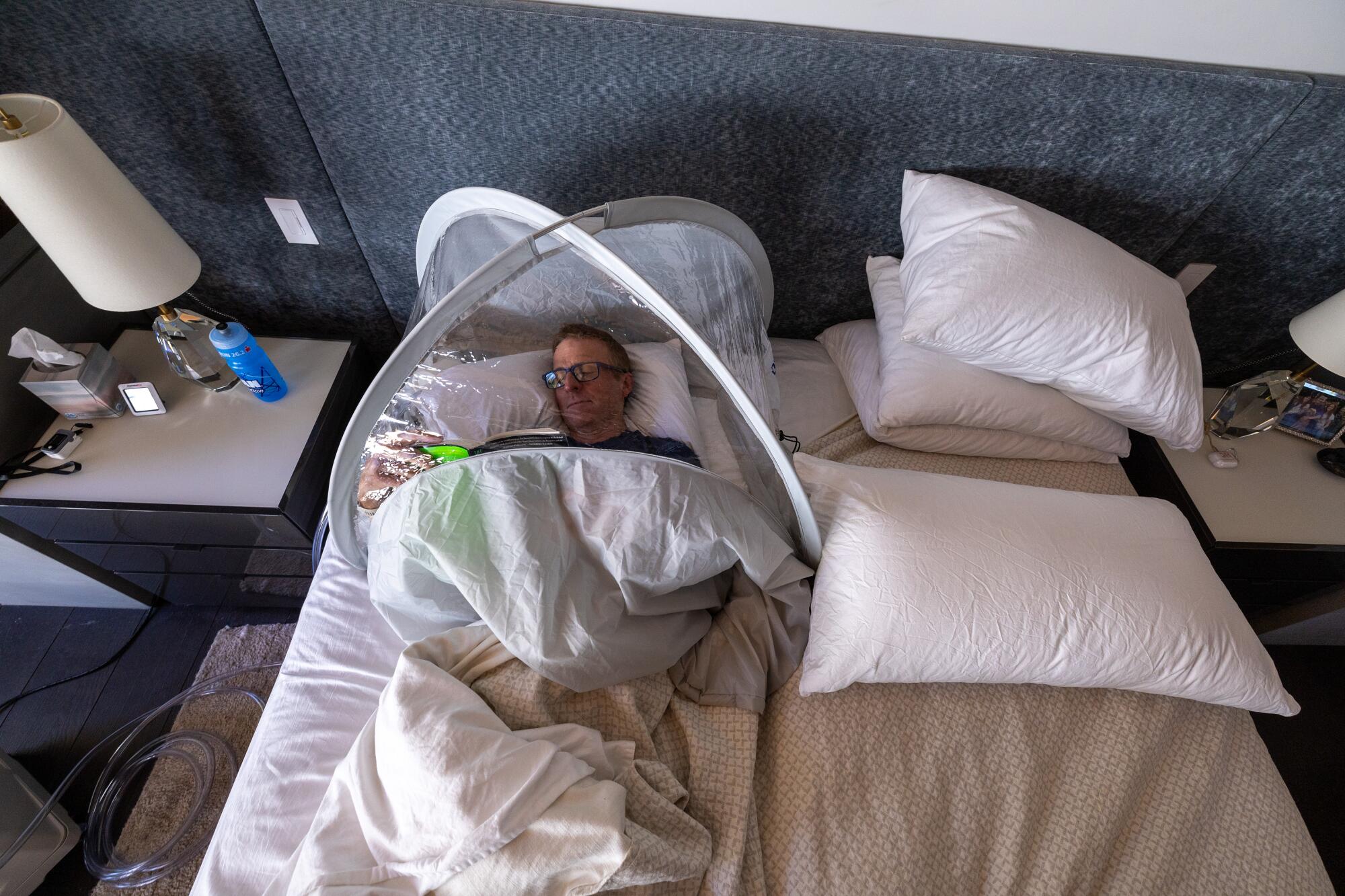
This time around, “the bag,” as he calls it, covers just his head and upper torso and takes up about a quarter of the bed. Hilary sleeps next to him, Cooper said, and she finds the hum of the motor surprisingly soothing.
It goes without saying that the luxury of acclimatizing at home, in bed, with your partner curled up beside you, represents a profound break from the usual manner of preparing to ascend what is still one of the world’s deadliest mountains .
The traditional method starts in Kathmandu, at nearly 5,000 feet, where climbers spend a few days getting over jet lag. That’s usually followed by a quick flight to the small mountain town of Lukla, at just over 9,300 feet. The airport there — perched on a narrow Himalayan shelf surrounded by towering peaks, with a steep drop-off at the end of the runway — is regarded as one of the trickiest places in the world to land an airplane.
From there, climbers begin a long, deliberately slow 10-ish-day hike to base camp. The point is to give the body time to gradually adjust to the lack of oxygen.
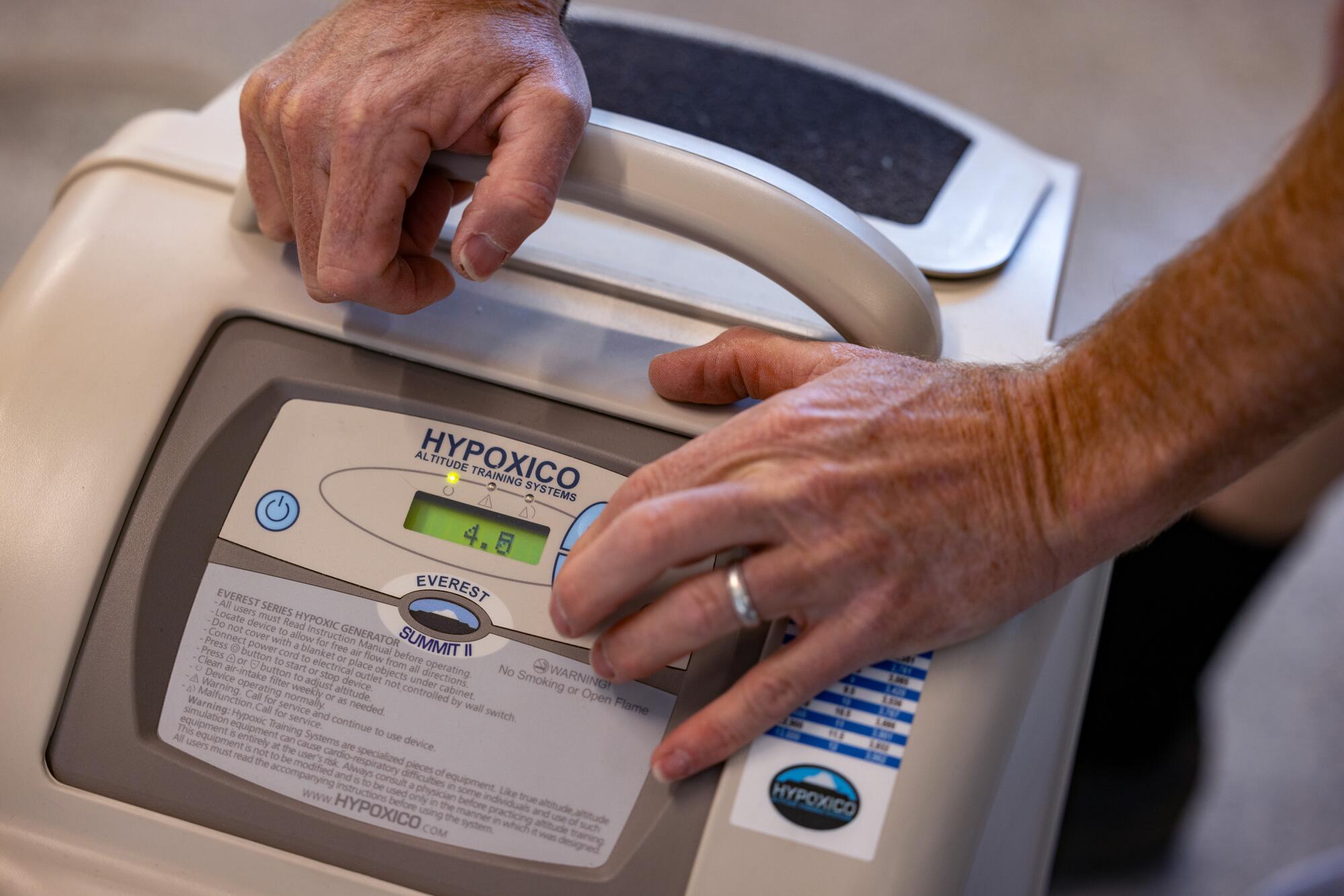
Ballinger cuts nearly two weeks from his trips by driving his bedroom-acclimatized clients from the airport in Lhasa, Tibet, straight up to the northern route’s base camp, which is also at about 18,000 feet.
For some old-school purists, eliminating the long walk borders on sacrilege, said Will Cockrell, a journalist whose recent book, “Everest, Inc.,” explores the evolution of commercial guiding on the mountain. “They’ll say, ‘You’re not a real climber; you’re not a real nature lover,’” Cockrell said.
But since the arrival of big commercial expeditions on Everest in the mid-1990s — complete with Sherpas to install climbing ropes, chefs to cook meals in camp, team doctors to monitor health, and guides to accompany clients every step of the way — Mt. Everest has ceased to be a classic off-the-grid mountaineering challenge.
“It has come to represent something completely different,” Cockrell said, “something crazy to do to shake up your life, like running an Ironman.”
Ballinger makes no apologies. “We’re not old school, we don’t spend a lot of time sitting around drinking whiskey and playing cards,” he said.
That suits his clients, who “tend to be pretty type A, pretty high performing in everything they do,” Ballinger said.
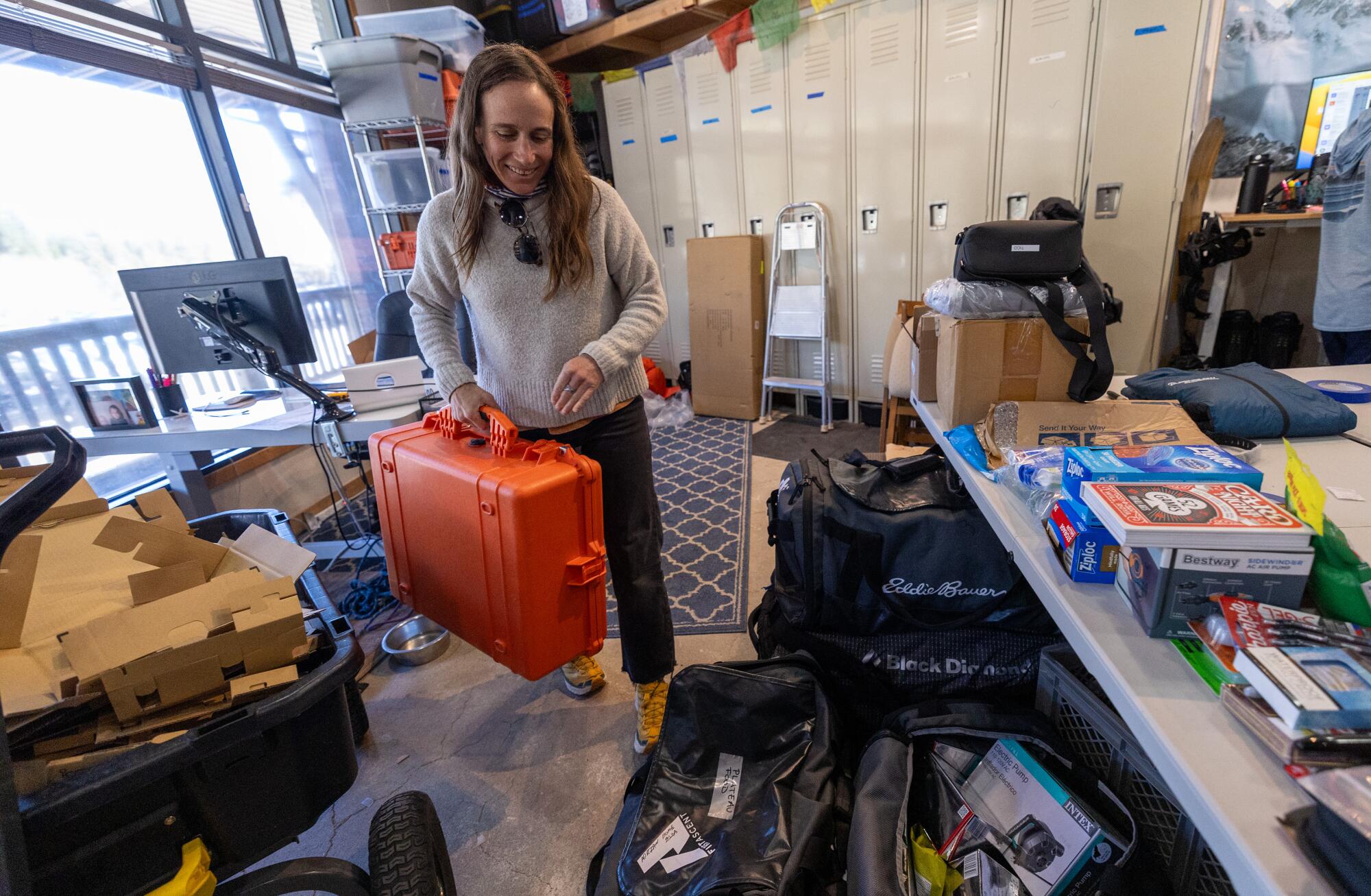
They’d better be. His company, Alpenglow Expeditions , charges $165,000 (before tip) for a private climb, meaning one professionally certified guide per client, and $98,000 for a group climb with three clients per guide.
“We’re proudly expensive,” Ballinger said. “I’ve spent a lot of time thinking about what it takes to run a trip safely and ethically, and this is what it takes.”
Climbing from the north side, as Ballinger does, avoids the huge crowds who flock to the southern base camp from all over the world every May, the prime climbing season on Everest, to wait for a brief window of good weather to try to make it to the summit.
Anyone who has even loosely followed events on Mt. Everest in recent years is probably familiar with the terrifying “conga line” photos of climbers stuck in the world’s highest traffic jam.
It forms just below the summit on the southern route, at the last technical obstacle, a nearly vertical 40-foot rock wall called the Hillary Step. It’s on a ridge with a 10,000-foot drop to the climber’s right and an 8,000-foot drop to the left. So, when exhausted and inexperienced climbers inevitably struggle there, everybody else waits in a single file, hanging onto a fixed rope, while the bottled oxygen they need to survive at that altitude slowly drains away.
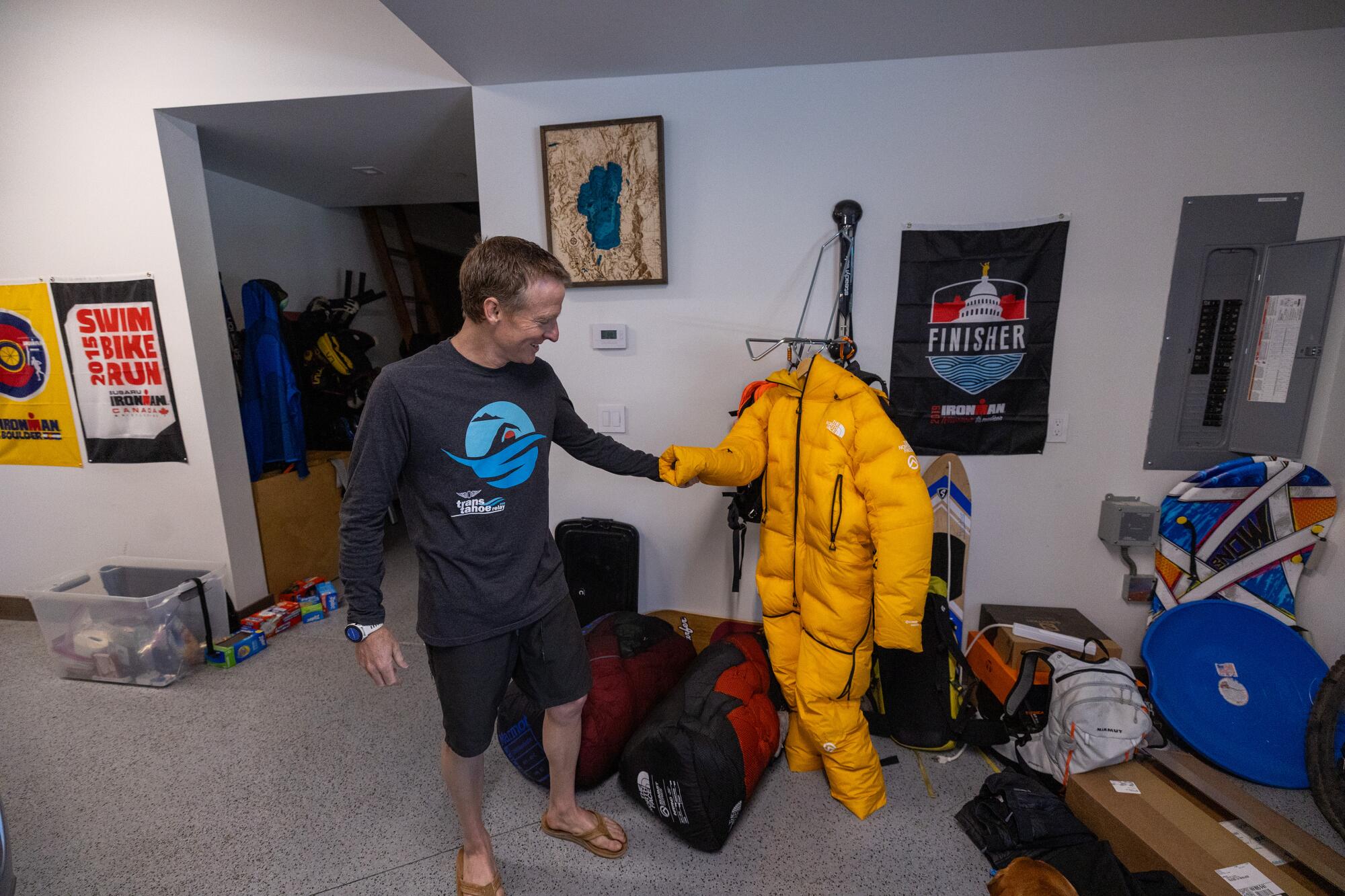
Worse is the Khumbu Icefall, a glacier just above the southern base camp. It’s best known for wide spine-tingling crevasses spanned by flimsy-looking aluminum ladders lashed together with rope. Climbers have to walk across those ladders, wearing big boots and crampons, as they make multiple trips back and forth to advanced camps to acclimatize before finally heading for the summit.
As dangerous as it is for the mostly foreign climbers and guides, the odds are even worse for the local Sherpas, who regularly traverse the Khumbu ferrying equipment — tents, food, oxygen canisters — for the climbing teams. Last year, the deadliest climbing season in Everest history, three Sherpas were killed in the Khumbu when a towering block of ice collapsed and buried them.
In six seasons climbing the southern route, from 2009 to 2014, Ballinger said he passed through the Khumbu 38 times and had two close calls. While nobody on his teams lost their lives there, he helped recover the bodies of other climbers who had not been so lucky.
Finally, he did the math and concluded there was no way he could get through a whole career — 20 or 30 years — without losing someone he was responsible for in the Khumbu.
“I just couldn’t do it anymore,” Ballinger said. “I just couldn’t justify the risk.”
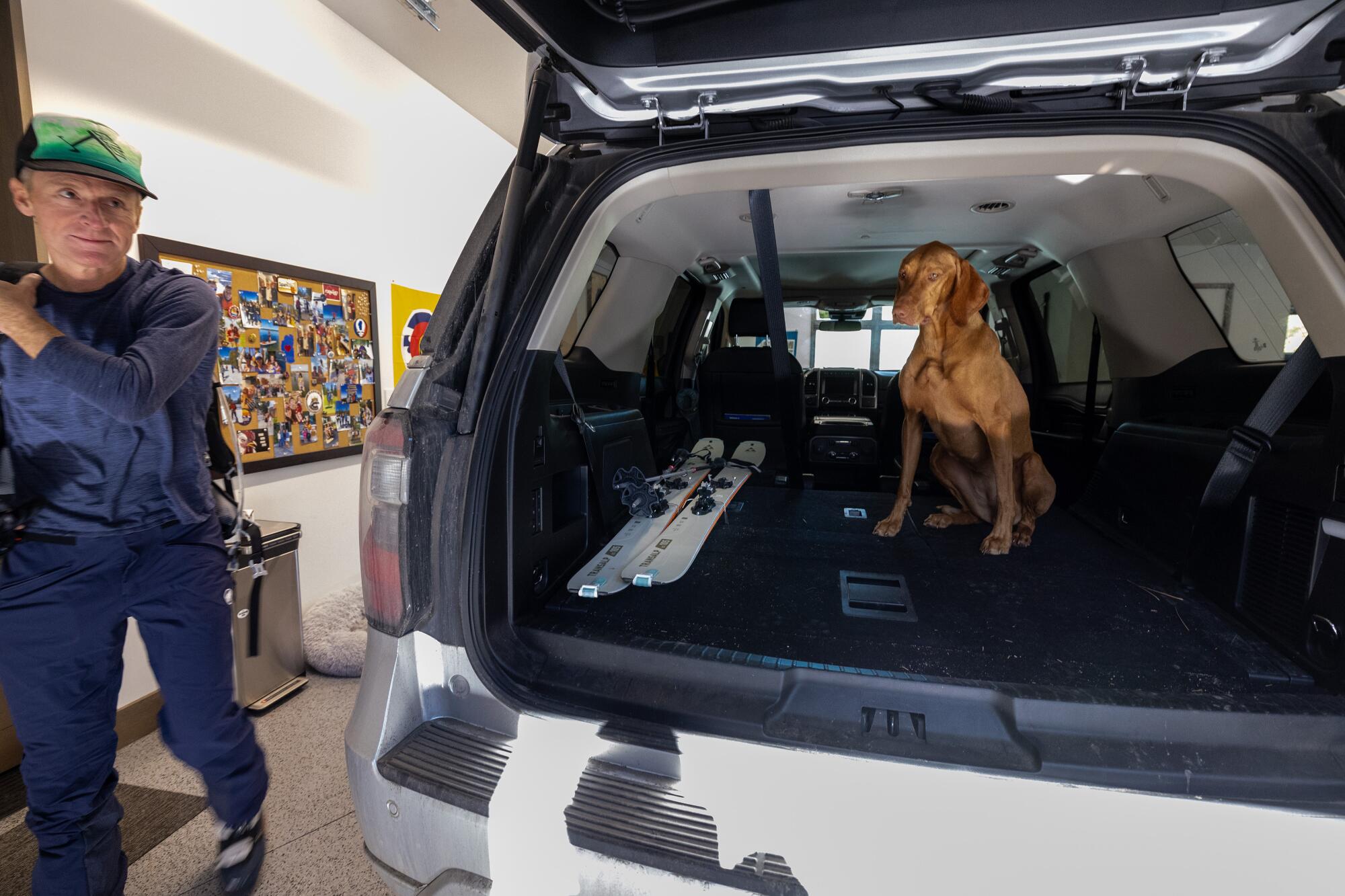
Ballinger’s data-driven approach and stellar track record were enough to win over Cooper.
And he has been willing to wait.
He was ready to climb Everest four years ago, but when China shut down expeditions to its side of the mountain in 2020 in response to the COVID-19 pandemic, Ballinger stuck to his principles and refused to resume climbing with the crowds in Nepal. This is the first year since the pandemic that the Chinese side has been open.
The Alpenglow team, which includes 26 clients, guides and Sherpas hoping to reach the summit, were originally scheduled to begin their expedition in late April. After a late permitting change from the Chinese government, that date has been pushed back to May 7.
Cooper has competed in the Ironman World Championship in Hawaii 11 times and has won the legendary Western States Endurance Run, a 100-mile ultra-marathon. He is not a man accustomed to sitting around. “I’m feeling ready and anxious to get going,” he texted a reporter last week.
When not trying to sleep in his hypoxic tent, Cooper has spent his training days in Tahoe on back-country skis doing laps up and down a mountain, his 3-year-old dog, a Vizsla named “Busy,” at his heels. Indoors, he straps on a hypoxic mask hooked to the same motor he uses for the sleeping tent and rides a stationary bike an hour at a time. Or climbs a StairMaster. Or throws on his mountaineering boots and a heavy backpack and trudges up and down slopes.
“I’m addicted to doing this kind of stuff,” said Cooper, who ran his first marathon when he was 13. “I just feel like a fundamentally happier person when I’m training.”
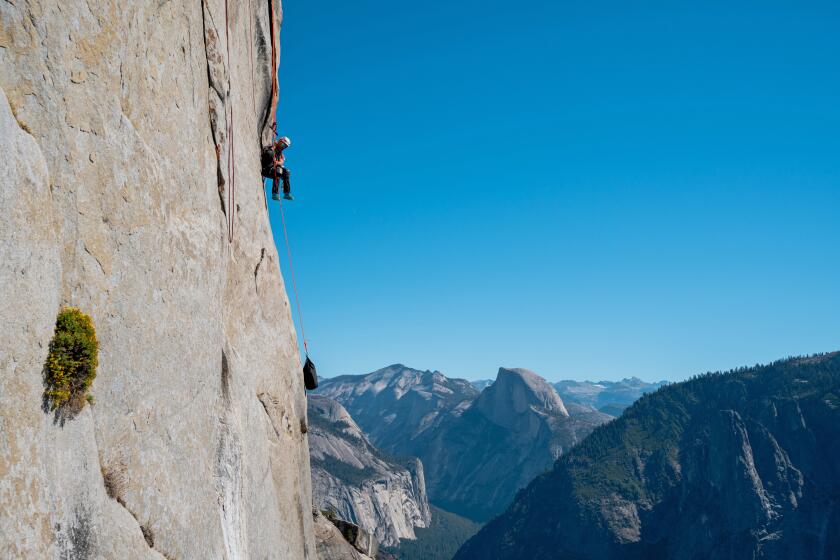
After a trust fall left him paralyzed, climber scales 3,000-foot El Capitan using only his arms
In 2015, mountain guide Zuko Carrasco’s world collapsed in a trust fall gone awry. Eight years later, he looked to reclaim his independence with an audacious plan to scale El Capitan.
Jan. 11, 2024
Ballinger leads clients on bucket list climbs all around the globe. Many of the treks present more interesting technical challenges than Everest. Almost all of them feel like wild outposts compared with the circus vibe on Everest’s south side.
Still, he gets poetic when he describes why so many clients are drawn to the world’s tallest summit.
“Because it’s so hard,” he said. It takes incredible fitness, mental fortitude and a heavy dose of luck to make it to the top. And no matter how many precautions you take, there’s that uncontrollable element of risk.
“It’s not just a battle for success, it’s a battle for survival up there,” Ballinger said. “That’s something that many of us have not experienced otherwise. I think that really captures people.”
More to Read
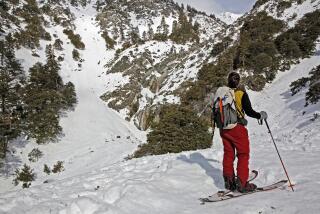
Letters to the Editor: Permits won’t deter hikers who have no business on Mt. Baldy
March 14, 2024
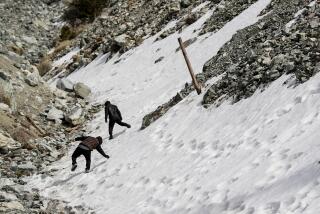
Editorial: Winter permits for Mt. Baldy could save lives of hikers — and rescuers
March 11, 2024

‘Craziest thing you can do’: Why are so many adventure seekers warming up to ice climbing?
Jan. 23, 2024
Start your day right
Sign up for Essential California for news, features and recommendations from the L.A. Times and beyond in your inbox six days a week.
You may occasionally receive promotional content from the Los Angeles Times.

Jack Dolan is an investigative reporter for the Los Angeles Times. A winner of numerous national awards, he has twice been named a finalist for the Pulitzer Prize.

Brian van der Brug has been a staff photojournalist at the Los Angeles Times since 1997.
More From the Los Angeles Times

Climate & Environment
Chuckwalla National Monument would protect swath of California desert and preserve a sacred land
April 28, 2024

L.A. supervisors oppose plan to eradicate Catalina deer by shooting them from helicopters
April 27, 2024

Tell us: Is it ever OK to gather fruit from someone else’s tree?
April 24, 2024

Travel & Experiences
What to know about California’s new state park, a scenic green space where two rivers meet
April 23, 2024
- About the Seven Summits
- Everest (Asia)
- Vinson Massif (Antarctica)
- Aconcagua (South America)
- Elbrus (Europe)
- Mount Kilimanjaro (Africa)
- Denali (North America)
- Carstensz Pyramid (Oceania)
- Kosciuszko (Australia)
- Explorer’s Grand Slam
- Ecuador Volcanoes Expedition
- Australian Alpine Academy
- Mt. Baker (USA)
- Lhotse (Nepal)
- Manaslu (Nepal)
- Cho Oyu (Tibet)
- Ama Dablam (Nepal)
- Lobuche East (Nepal)
- 3 Peaks (Nepal)
- First Ascent (Nepal)
- Rugged Luxury Everest Base Camp Trek & Stay
- Everest Base Camp Trek (Nepal)
- North Pole Last Degree Ski (North Pole)
- South Pole Last Degree Ski (Antarctica)
- Orizaba Express Mexico Trek (Mexico)
- Mt. Rainier (USA)
- Mont Blanc (France)
- About Us / Why CTSS
- How to Apply to CTSS
- Employment Opportunities
- CTSS’ “No D*ckheads” Policy*
- Letter to your Loved Ones
- Success & Testimonials
- Marginal Gains Philosophy
- CTSS Guides & Team
- Mike Hamill
- Climbing Education
- Climbing Gear Advice
- Female Climber Considerations
- Trip Insurance
- Our Speed Ascents
Orizaba Express Difficulty Level: Advanced Beginner to Intermediate
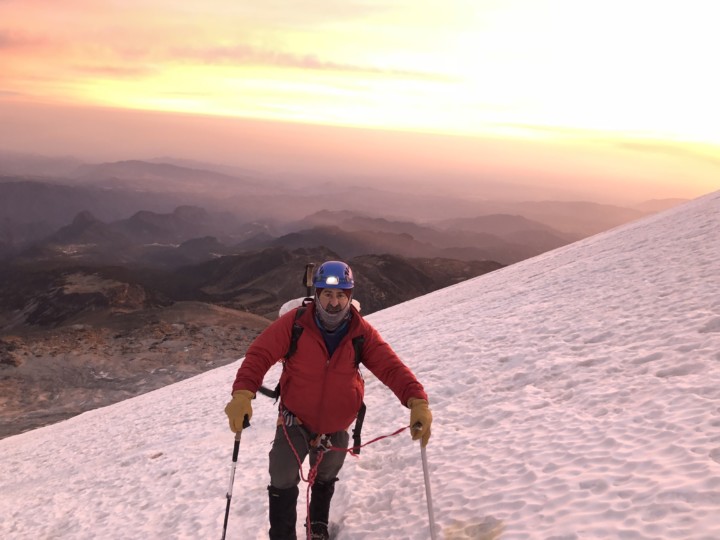
Orizaba (Formally known as Pico de Orizaba) is North America’s third tallest peak and a classic climb. Situated in Mexico, it has it all: culture, high mountain huts, stunning views and the opportunity to get your crampons into plenty of snow and ice. This mountain is easily accessible to just about anyone willing to train and work hard on the climb.
- Climb Mexico’s tallest peak
- Build technical mountaineering skills
- Experience Mexico and its people
- Explore ancient Aztec culture and relics
- Eat the world’s best mole in Puebla
- See the sunrise over Popo and its plume of steam, an active volcano, whilst acclimatizing from the slopes of Mt Ixta
Conditions on Orizaba were tougher than normal but under Mike’s leadership and his attention to detail, our entire team summited. Everything was planned perfectly and lifelong friendships were formed ‑Kent Stewart
Expedition Intro
Orizaba is a stratovolcano that sits in the Trans-Mexican Volcanic Belt and is just a short flight away from major hubs in the United States.
The beauty of our “Orizaba Express” climb is that it is a high-altitude gem which is very conveniently located and you can do it in just a week. It’s the perfect ascent for time poor people who have limited vacation or those who are preparing to climb Aconcagua or Himalayan peaks. To maximize the trip we have scheduled it so it is book-ended by the weekend.
The climbing consists of mostly moderate glaciated terrain with a few protected steeper sections that involve roped travel, solid cramping and general snow climbing skills. We also take some time to explore the region and meet the locals who are amazingly friendly and welcoming, their culture rich and fascinating not to mention their food is delicious! We have a very close relationship with our local outfitters and staff and consider them like family.
Our Mexican Volcanoes program is high altitude climbing from beginning to end. We fly into Mexico City at 7,382ft/2,250m, so right from the start your body will start adjusting to the rarefied air. Because of this it is paramount to use a slow progression, promote hydration and temperance and watch each other for symptoms of altitude illness.
“Orizaba Express” is one of our shorter expeditions and as such one of our most popular trips because it allows those who are time poor to still get into the mountains. We acclimatize for Orizaba on the neighboring flanks of Ixta (short for Iztaccihuatl) allowing us to see more of the region. However, please note, we don’t intend to summit Ixta, we use it primarily as acclimatization training. This keeps our expedition within that week-long schedule whilst still giving us variety. Ixta is also less glaciated and summit day is long and boring with more objective danger. Summiting Ixta only fatigues our climbers and detracts from the real objective, Orizaba. Orizaba is not only more scenic, it allows us to get into our crampons and cement our technical mountaineering skills.
We have led many trips to Mexico and have stood on the top of Orizaba each time and hope to maintain our 100% success rate for many years to come. You don’t get better odds than that!
This expedition will be organized by Mike Hamill, Owner of Climbing the Seven Summits. Mike has personally guided nearly well over 100 high altitude expeditions, 10 Mt. Everest expeditions, 23 X 8,000m expeditions, has 6 Everest summits, currently holds the record for most non-Sherpa summits of Cho Oyu, and has written the guide book to “Climbing the Seven Summits,” making him one of the most experienced guides in the world.
Mike has an impeccable safety record and an unmatched success rate due to his expertise and professionalism and holds all of the CTSS guides to the same high standards as he holds himself.
He knows that his choice of guides is the most important decision factor to continued success so CTSS only employs world-class leaders known for their coal face experience, focus on client care and attention to safety. Orizaba is a serious undertaking and climbers should be prepared with adequate fitness. Our guides will work with you throughout the expedition to provide logistics, guidance, and information to best ensure your summit success & safety.
A note from CTSS Owner, Mike Hamill
Welcome to “Climbing the Seven Summits” Orizaba Express Expedition!
Orizaba is a classic. It’s such a great peak because it offers excellent climbing that is just so accessible and quick being so close to the United States.
I have personally designed our Mexico expedition and it is guided by either myself or my pick of senior mountaineers who have a huge breadth of experience, not just on Orizaba but on all the Seven Summits.
I’m proud to say I’ve had a 100% success rate on climbs under my direct leadership so you can be assured by and have confidence in our CTSS experience, advice and safety standards.
On this trip, we acclimatize on the slopes of Ixta the neighbour of Orizaba. This allows us to take in more of the vast scenery Mexico has to offer, experience more of the Mexican flare, and to allow our climbers more time to acclimatize properly, thus increasing our chance of success.
We look forward to helping you achieve success on this expedition. Please don’t hesitate to contact me directly regarding the expedition if you have any further questions.
Best regards, Mike Hamill Owner and Lead Guide, Climbing the Seven Summits
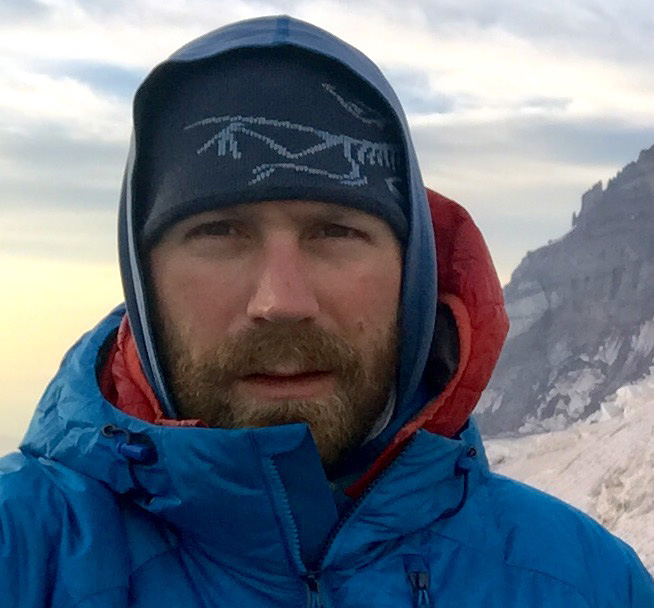
Expedition Options (Schedule and Prices)
At CTSS we offer a variety of different climb options to customize your Orizaba experience to your climbing style and ability:
Orizaba Express Guided Climb
- Porter Option
- Orizaba Express Private Climb
- Orizaba Speed Ascent with Private Guide and Hypoxic Pre-acclimatization Chamber
- Single Rooming Upgrade
January 11th – January 19, 2024: $3,695 USD
This is our most popular option. This expedition is our traditional guided team climb which ascends the stunning Northern Route.
For a detailed overview of the trip from an objective source, have a read of this great article by mountaineer Laura Lisowski: https://www.releasetravel.com/blog/2019/1/25/climbing-orizaba-preparation-for-everest-with-los-authenticos
Provided are guidance, leadership, and expedition oversight by renowned expedition leader Mike Hamill, local guides, logistics, team gear, food, and support for a summit attempt on Orizaba. All prices are in US Dollars. CTSS requires clients to buy trip insurance for all expeditions. Please see our page on trip insurance and cancellation policy for more information.
All payments once submitted are non-refundable and non-transferable. If balances are not received by specified dates, the client forfeits their place on the program and any prior fees paid.
On Mountain Porterage 2 Days – $750 Our Orizaba expeditions are self-carry and there are two days in particular, moving to high camp and descending from high camp that packweights can be heavy. If you would like additional support, we encourage you to do so and contribute to the local economy by employing a porter. This includes up to 20kg | 44 pounds of weight carried on your behalf.
Mexico Volcanoes Private Climb:
1:1 Client to Guide Ratio , $11,950 usd
Having your own private guide climbing with you can be an indispensable advantage! A private guide allows you to dictate the schedule, amend it depending on how you’re feeling, customize a program, and a private guide can coach you throughout the expedition, give you valuable feedback, be available if there are any medical issues, and make your climbing experience more enjoyable overall. Although summits a obviously never guaranteed but this is a great way to stack the odds in your favor.
All prices are in US Dollars. CTSS requires clients to buy trip insurance for all expeditions. Please see our page on trip insurance and cancellation policy for more information. All payments once submitted are non-refundable and non-transferable. If balances are not received by specified dates, the client forfeits their place on the program and any prior fees paid.
Orizaba Speed Ascent w/ Private Guide and Hypoxic Pre-acclimatization Chamber
(Please contact us directly for dates and prices)
CTSS offers select climbers our “Speed Ascent” option which employs state-of-the-art technology to allow you to summit in less time. If you are short on time and want to make the round trip safely but as quickly as possible, this is the ideal option. We use a time-tested training program in conjunction with the use of a portable hypoxic altitude chamber to pre-acclimate your body to the rarefied air found at altitude. This option is perfect for those who want to minimize time away from home while still stacking the odds in their favor for summit success. If you think this option may be right for you please contact us directly and we will work with you on a personalized plan to allow our “Speed Ascent” Program to maximize results for you.
This expedition provides a Private guide at a 1:1 ratio, logistical oversight by expedition leader Mike Hamill, logistics, food, team gear, and support for a summit attempt on Orizaba. Whether you’re a less experienced climber or have climbed at altitude many times before, our speed ascent private climb with 1:1 Private Guide will give you the best chance at standing on top of Orizaba in less time than the normal expedition.
CTSS requires clients to buy trip insurance for all expeditions. Please see our page on trip insurance and cancellation policy for more information. All payments once submitted are non-refundable and non-transferable. If balances are not received by specified dates, the client forfeits their place on the program and any prior fees paid.
Single rooming option: $500
We are happy to organize single rooming accommodations throughout the expedition for you. If you aren’t price sensitive, you snore or you are easily awakened by others that do snore this might be a great option.
We feel that having a single room helps climbers stay healthy and adds a bit of comfort and personal space that can go a long way. If you would like a single rooming option please let us know.
Please note that tent accommodations on the mountain are double-occupancy for safety and warmth.
All prices are in US Dollars.
CTSS requires clients to buy trip insurance for all expeditions. For more information, please see our page on trip insurance and cancellation policy .
All payments, once submitted, are non-refundable and non-transferable. If balances are not received by specified dates, the client forfeits their place on the program and any prior fees paid.
- Pico de Orizaba is a stratovolcano and the tallest peak in Mexico standing at 18,880ft
- The volcano is currently dormant but not extinct, with the last eruption taking place during the 19th century
- Mexico City is built on the ruins of an Aztec city.
- Mexico has a population of 10 million
- Orizaba has also been called Citlaltépetl which means “Star Mountain”, “Cerro de San Andrés” and a third name, Poyauhtecatl, which means “the one that illuminates”
- It has so much prominence it can be seen from the Gulf of Mexico
Why Choose CTSS for your Orizaba Express expedition
Best expedition at a great value: CTSS believes in providing our clients with the highest quality service in the industry at a great value. Climbing and trekking is our passion, and our goal is to share these unique places and experiences with you. We want you to feel good about your experience because we believe word-of-mouth is the best advertising, and that begins with satisfied customers. There is a difference between our expeditions and those of our competitors, especially local cut-rate options. In choosing us, you are hiring the finest guides and logistical support in the industry. Benefiting from many Kilimanjaro expeditions, well over 100 high altitude expeditions, and drawing on decades of first hand guiding experience, we have worked hard to refine our logistics in order to offer you the highest chance of success at an exceptional value.
We are a modestly sized guide service with highly personalized service: We maintain a moderate size so that we can tailor our Orizaba climbing experience to you. Not all climbers are the same, which is why Mike Hamill will work with you directly to make sure you choose only the programs that are right for you.
The best route: CTSS climbs northern route on Orizaba. By using this route, we provide you with the highest chance of success and give you the best climbing experience available on the mountain. This is due to the more relaxed terrain and greater amount of time for acclimatization en route to the summit. This route offers a stunning glaciated ascent of the peak and some of the best mountain vistas in North America. We climb through a variety of different ecological zones and take in the local culture along the way. You will see when you’re on the mountain that there’s no better way to climb the peak.
Mexican culture: We take time on our first day in Mexico City to see some of the best cultural sites the country has to offer. If you’re a fan of Aztec history then this is a great experience for you. Beyond the sights in and around Mexico City we immerse ourselves in Mexico eating and staying and eating at some of the best and most quintessentially Mexican places in the region.
Leadership: As expedition leader, Mike’s almost unparalleled experience base at high altitude can make the difference between success and failure. Let Mike guide you through the many nuances of climbing Orizaba that will allow you to be successful. From start to finish, he will work with you to make sure you’re as prepared as possible to reach your goal of standing on top of Mexico. Often being able to trouble shoot problems before they occur can make the difference, and this is where Mike’s vast experience becomes crucial. See Mike’s success rate.
Best guides: The quality of an expedition is, in large part, dictated by the individual guide(s) leading the trip. CTSS hires only the finest guides operating at the highest standards for client care who are highly trained, well respected in the industry, and close friends that we trust. The have excellent personalities and are some of the most experienced professionals in the world. Mike and the rest of our guides are strong leaders who maintain high standards. Our guides make our company what it is and have extensive resumes of personal climbs, high altitude guiding, and certifications. All our lead guides maintain at least a Wilderness First Responder medical standard. Our local guides around the world are the best in the industry and do an amazing job helping you attain your goals and navigating local obstacles.
Safety: Our primary goal at CTSS is safety. We have an unparalleled safety record and our clientele’s wellbeing factors in to every decision we make while on expeditions. Although we like to stand on the top of mountains more than anyone, we believe that climbing is a round trip endeavor and getting you back to your loved ones safely is paramount. We take many safety precautions including bringing multiple communication devices, high altitude safety equipment, medical kits, and the highest quality gear to ensure a safe environment in which to climb.
Success: Success rates on expeditions under Mike’s leadership are among the best in the business. Mike has maintained a 100% expedition success rate for expeditions under his direct guidance on Orizaba. This is a testament to our quality of service and attention to detail. Mike and our team of guides are incredibly proud of their summit success and work hard to get their clients to the top. As Mike says, “You can’t buy a summit, but you can buy better odds.” With our expertise, experience and infrastructure, you can stack those odds in your favor. We offer a longer acclimatization progression for proper acclimatization to mitigate the risks of altitude sickness. Many guide services race their clients up the mountain, especially local companies, to cut corners on costs. We are highly invested in our reputation for safety and success and are always striving to improve our programs to maintain our hard-earned status. Decision making in the mountains is supremely important, and our guides are the best in the business, have a hunger to summit whenever it’s safe to do so, and have a proven track record. All of our programs acclimatize conservatively to mitigate the risk of having altitude issues and to give them the highest chance of success.
You! Why choose us? Because of you! We consistently attract the best clients and believe this is because we offer the highest quality expedition at a great value. Our clientele takes the time to educate themselves about their options and choose us because of this. We feel that surrounding yourself with the right people will make you successful, and that goes for guide service owners, guides, and even those with whom you climb. Having a team with the right attitude and camaraderie is a key factor in making you successful.
Logistics: We have led countless high altitude expeditions and have perfected the logistics, allowing you to focus on climbing, safety and success. We eat well and live well on expedition. We want you to feel as comfortable as possible while on your climb or safari to not be distracted from the task at hand. We feel that these creature-comforts go a long way to making your time in the backcountry enjoyable. We strive to work with the best local outfitters and provide the best local logistics hands down.
Updates: In today’s connected world people want to know how things are going on expedition. CTSS maintains regular updates on our blog to keep friends and families informed. This can relieve a lot of the stress loved ones have when you’re away on climbing. We want to make the climb as stress-free for both the climber and the folks back home.
Professional Business Practices: Running a professional guide service that you feel comfortable putting your trust in is important to us. We comply with all local, state, federal and international laws. We hope that this makes you feel more confident about choosing us and our programs.
Enjoyment: This is your vacation, and you’re here to have a good time. Our goal is to give you the experience of a lifetime, inspire you in the mountains, and to have a great time doing it. This, again, comes back to our guides; they all have great personalities, and their love for the mountain is contagious.
Low client to guide ratio: We operate all of our trips at a low client to guide ratio which offers you a better, safer, and more personalized experience.
“Again, thanks for an awesome adventure. It’s the people, the friendship and the camaraderie that make up for more than half of the experience. Thanks for being so great!! and getting me up and down that hill safely. I look forward to climbing with you again in the future.” Jason V
“Thank you again for the trip of a lifetime” -Rick B
Prerequisites
Difficulty: Advanced Beginner to Intermediate Climbing Orizaba requires solid fitness and an ability to perform well at altitude, but it is not beyond the abilities of many people who are willing to train for the climb and work hard on the trip. Prior use of crampons and an ice axe is preferred but not mandatory as we will do a brief snow school for those with experience to touch up their skills and for others to become familiar. If you want to join this expedition but feel unsure of your ability, chat to us as we can work with you to get you up to speed prior to the climb as we take immense pride in helping people achieve their goals.
The following is a sample daily schedule of our Orizaba Express climb:
Day One – Arrive Mexico City and transfer to Tlachichuca Day Two – Gear Checks/Guide briefing. Day Three – Drive to Cortez Pass for our acclimatization climb, Day Four – Move to hut at Cortez Pass and hike above Pass Day Five – Drive to Hut on Orizaba, Short acclimatization hike Day Six – Carry to high camp on Orizaba Day Seven – Move to high camp on Orizaba Day Eight – Summit and descend to Tlachicuca Day Nine – Drive to Mexico city for afternoon flights
Check the gear list. Pack and repack to make sure you know your gear. The gear on the gear list is mandatory to allow you to have a safe, successful climb as well as your entire team. Any questions we’re here to help.
For a complete gear list with descriptions and links to actual recommended items please see our Bolivia gear list page at:
Travel Gear:
- Travel Wallet: It should sling over your shoulder and lay discreetly next to your body
- Passport, cash and travel documents: Make sure to have a print out of all travel documents, pen, plenty of csh for the trip, and your passport handy.
- Sneakers: Light weight sneakers for travel and at base camp
- 2 pairs light socks: For use with sneakers.
- Day pack: Light weight 30 liter pack doubles as a carry on and a trekking pack
- 2 Duffel Bags: Heavy PVC duffel bags hold up to abuse and pack well on donkeys and in jeeps.
- 1 small duffel: to leave city clothes in at the hotel. Please no rolling duffels. Your duffels will be carried by porters and donkeys and rolling duffels make this very difficult for them and are much heavier.
- 3 Locks for Duffel bags: It is best to not tempt anyone into going through your gear so one lock per duffel is smart. TSA-type locks that customs officials can access and re-lock are handy as are zipties that can be cut off and put back on easily. Duffel locks are good for locking bags stored at the hotel or while on the donkeys/porters while climbing.
- Passport photos (3) You will need at least 1 for your Visas and it’s always good to have a few extra.
- Casual Travel Clothes: Several days will be spent in transit, in Mexico City, driving to base camp and at base camp so it is nice to have some casual clothes to travel in.
- Hotel vouchers if laying over en route to Mexico: If you have extended layovers make sure to pre-book a hotel and print out the voucher. Our travel agent can help you with this.
Lower Body:
- Medium weight trekking boots: Comfortable boots with plenty of ankle support and warmth to trek to base camps and ascend to high camps.
- 4 pairs of climbing socks, synthetic or wool: 2 medium weight for lower altitudes, and 2 heavier weight for summit days. They must not be too tight when used with climbing boots.
- Double climbing boots: Warm plastic double boots such as the Scarpa Inverno, La Sportiva Spantik, and La Sportiva Baruntse are ideal. Triple Boots are overkill and will be too warm. Single leather boots are not enough for the summit days!
- Medium weight gaiters: Must fit your boots. They will be used trekking to base camp, higher camps, and on the summit days.
- Chemical foot warmers: Optional, if needed. Some people use foot warmers for high altitude climbing and swear by them, others don’t. If you get cold feet you should seriously consider purchasing a pair of boot warmers and fitting them to your boots. They could prevent you from needing to turn around on summit day with cold feet.
- Foot powder: Foot power keeps feet dry and warm and can really help on summit day.
- Down booties: These are great for walking around base camp and at the upper camps. Try to find something light weight with a sole.
- 2 pairs of long johns: 1 thin and 1 medium weight. They will be worn underneath climbing pants so make sure the climbing pants will fit over them.
- 6 pairs of underwear: 3 pairs of synthetic underwear for climbing, 3 pairs cotton underwear for off mountain use. Three pairs of each for travel and on the mountain should be sufficient.
- 2 pairs of synthetic climbing pants: 1 thin and 1 medium weight. They need to fit over the synthetic under layers. Scholler type pants or quick drying zip-off pants are both great options.
- Jeans: For travel and base camp
- 1 pair of Goretex type full-zippered shell pants These must be full zipper and should be light weight. They need to fit over your synthetic under layer and climbing pant combination to layer for warmth. They must be waterproof and breathable.
Upper body:
- Casual shirts for travel and base camp
- 2 synthetic under layers: 1 light, 1 medium. These must fit underneath your mid weight layers. The light one will be for lower on the mountain and the medium weight for up higher. A zippered collar is a nice option to have.
- 2 medium weight layers: 1 synthetic pile jacket, 1 down or synthetic vest. These two layers must be able to be worn in unison over the synthetic under layer and underneath the Shell jacket and down jacket. They should be light and one should have a hood.
- 1 waterproof shell jacket: This need to fit over your medium weight pile layers and be light weight, waterproof, and breathable.
- 1 mid-weight down jacket: This is to be worn at base camp, higher camps, and on the summit days. It must be able to layer over your other layers and have a hood. It doesn’t need to be an 8,000m parka but should be the step just below.
Head and Hands:
- 2 buff neck gaiters: These can be worn on the dusty drives to base camp to avoid sickness and on the mountain to warm and humidify the air.
- 1 face mask: A full face mask that can cover all of the skin on your face when used in unison with goggles is a necessity for cold, windy days.
- 2 heavy weight winter hats
- 1 sun/baseball hat: A sun hat that protects the neck is a great addition to your gear for trekking and on the mountain.
- 1 light weight fleece/synthetic liner gloves: These may be used on their own or underneath the warmer glove and mitten layers
- 1 medium weight fleece/ski glove: These will be used on their own lower on the mountain
- 1 heavy weight pair of climbing gloves: These can be used on their own or with a lighter pair of fleece liners higher on the mountain when climbing in cold weather. They are required gear and should be warm enough to climb to the summit in. Gloves have more dexterity than mittens for manipulating gear so they should be warn as much as possible as long as your hands are warm.
- 1 heavy weight pair of down mitts: These are used as a back up pair if you were to drop a glove or if it is extremely cold and you need a layer warmer than heavy climbing gloves. They should fit over a lighter fleece liner glove.
- Hand warmers: Like foot warmers, some people use hand warmers, others don’t. If you get cold hands you should consider bringing them although they don’t burn very warm due to the low oxygen at higher altitudes needed for the chemical reaction to take place.
- 2 pairs of Glacier glasses (one spare): These must block out as much light as possible and be the darkest level of protection (Cat 4). Removable side shields are useful. Bring a spare pair in case one is lost or broken.
- 2 pairs of goggles: 1 clear lens and 1 dark lens. The light pair will be worn on summit night when it is dark if it is really cold and windy, and the dark pair the rest of the climb. They both should block UVA/UVB and fans are quite effective.
- Prescription eyewear: If you wear prescription eye wear make sure to figure out how you will deal with tis on the mountain when it is cold, dusty, and windy. Many people purchase prescription glacier glasses and goggles to use up high and use glasses and contacts down low.
- Sunscreen: SPF 30 or so is good with Zinc in it.
Personal Gear:
- Trekking Poles: These must be collapsible and fit in your duffel bags. A medium sized snow basket is recommend.
- 80L climbing pack: This pack will be used on the mountain. It must be lightweight and fit your back. Since we need to carry a load to high camp on Ixta and carry that same gear back down again we need a large pack.
- Pack cover: This is convenient for the trekking to base camp and upper camps. It must fit your pack.
- Umbrella: An umbrella is nice to have for the trip to base camps. Buy a large one with a long handle.
- 1 sleeping bag: 1 rated to 0F or -10F: The should be made of down and light weight.
- 2 sleeping pads: 1 closed cell foam, 1 inflatable. They will be used together at the mountain camps. They should be light weight and have a high R-value.
- 2 headlamps; 1 medium sized and 1 small sized as a backup both with extra batteries. The main headlamp must be bright but light weight and the other will be used as a back up. Bring extra batteries for both.
- Batteries: 8 AA batteries and 8 AAA batteries depending on what your electronics use. Make sure to have enough batteries for all your electronics and gadgets.
- 2 litre water bottles, wide mouth Nalgene-type.
- 2 water bottle covers (jackets): These must fit over your water bottles and be as insulating as possible.
- 1 litre thermos (optional): This will be used high on the mountain to make sure you always have unfrozen water. Make sure it insulates well and doesn’t leak. It is also nice for carrying hot tea on the route with you.
- Snack food: We will provide lunches (and of course breakfasts and dinners) but be sure to bring enough palatable personal snack food as you will need on the mountain. We recommend 2 pounds/1 kilograms. It needs to be palatable when you don’t want to eat at altitude. Specialty items such as “Gu”, “Nuun”, and shot blocks are excellent.
- Water purification (optional): Iodine tablets, filter or UV treatment. We will boil all the water you will need to drink while on the trip. However, since it is boiled it takes a while to cool. If you want cold water then bring personal water purification. You can buy bottles water while in town, but it is nice to not create more trash than necessary and save some money. Don’t pack bottled water in your bags because the extra weight gets expensive when hiring mules and bottles can break. We don’t recommend drinking un-purified water out of the tap in Mexico.
- Books: Bring one or two and we will be able to share them around to save weight.
- Camera: Lightweight is good for the mountain but you can bring a heavier one for the drive and in to base camps. Make sure to bring plenty of storage and your battery charger. Many people just bring their Iphones on climbs now.
- Multitool: Good for around camp but make sure not to cut yourself with the knife!
- Toilet paper (1 roll): Toilet Paper will be provided once we arrive at base camp. It’s nice to have one roll for the upper camps.
- Altitude watch: Knowing your altitude is important in the mountains. Everyone should have an altitude watch.
- Sun screen: SPF 30 or higher. Make sure to bring enough for the entire expedition.
- Hand Sanitizer: Bring several small bottles to keep in your pocket at all times and one or two medium bottles for use at camps.
- Tooth Brush and Toothpaste
- Nail trimmers
- Baby wipes: These are invaluable while at the mountain camps for cleaning up.
- Basic medical kit: Should include: blister kit, low dose aspirin, bandaids, wound closure strips, triple antibiotic ointment, basic repair kit, scissors, diamox (acetezolomide, 125mg) for AMS, niphedepine (for pulmonary edema, time release), dexamethazone (for cerebral edema, 4mg), antacids, NSAIDs such as aspirin or ibuprofen, anti-diarrhoea, duct tape, ear plugs, Antibiotics (upper respiratory such as Azithromycin and a gastrointestinal such as Ciproflaxin), melatonin, Asthma medication if you use it (Advair), cold and flu medication,
Climbing Gear:
- Harness: This should be lightweight and have detachable leg loops.
- -1 locking carabiners and 2 non-locking carabiners
- Helmet: There are a few sections with rock fall and ice fall.
- Ice axe: Bring an alpine axe that is long enough for walking and has a leash.
- Crampons: 12 point crampons that MUST fit your boots perfectly. Once we get on the mountain there is no option to change crampons so a proper fit is crucial. We will double-check the fit during the gear checks.
Application and Payment
Thanks for your interest in our expeditions. We're looking forward to climbing with you!
To apply for our expeditions, please contact us to send you an application packet.
1. Fill in the application form (you can fill it out digitally or print and scan) and email it back to us at: [email protected] 2. Pay your 25% deposit (wire transfers are preferred and the details are on the application form. Credit cards attract a merchant surcharge) 3. Upon receiving your application and your deposit, and accepting you onto the trip, we will then issue you an invoice reflecting that and your balance amount and due date 4. Please send us the remainder of the forms to [email protected] which are due 4 months of departure along with your balance. 5. At the same time, please send a copy of the photo page of the passport you intend to travel on and a copy of your trip insurance*
*It’s worth noting most insurers require you to take out a policy within 14 days of paying a deposit for their trip cancellation/interruption clauses. Please don’t hesitate to contact us if you would like recommendations on who we use for our guide’s insurance etc.
Travel can be booked through our partner travel agent: Pirjo DeHart at CTT Destinations.
What's Included / Not Included in Your Orizaba Express Expedition
- Transportation: All group transportation while on the expedition. If you depart early then the added expenses for transport, lodging, rescue, and evacuation is your own responsibility.
- Food: While we’re on the mountain all of the food (dinners, breakfasts, snacks/lunch) will be provided but it’s best to supplement as usual with a few pounds of your favorite snack and climbing food. Make sure it’s palatable up high.
- All Group Gear: Four season tents, cooking gear, group duffels, stoves, etc.
- Satellite Phone: Available to clientele at $3/min
- 1 drink per meal
Not Included :
- Flights to and from Mexico
- Any extensions prior or post the specified itinerary (however we can help you plan these add ons)
- Personal gear: all personal climbing gear is the responsibility of the client
- In the event of a rescue, evacuation, or early departure from the group, any rescue expenses incurred or excess expenses above and beyond our normal trip costs including transport, hotels, evacuation, flight changes, and gear shipping are the responsibility of the client.
- Guide Tip (Customary but optional)
- Required trip insurance policy (for trip cancellation, interruption, rescue & evacuation, medical treatment, repatriation, etc.)
- Snack food: We will have some snacks/lunches for the team but we always recommend bringing about 3lbs of snack food that you know you like and will be bale to eat at altitude when you’re not hungry.
CTSS Expedition Leadership
Mike Hamill oversees each Orizaba expedition and leads many of them personally.
Mike Hamill , lead guide and owner of CTSS, is universally regarded as one of the most experienced and respected high altitude mountaineers and expedition leaders in the world.
He has personally guided thousands of climbers on the Seven Summits and well over 150 climbers have stood atop 8000m peaks, including Everest with him. A guide for over 20 years, he boasts a 91% expedition success rate and an 83% climber summit success rate for all of his expeditions worldwide.
He has stood on top of Everest 6x and currently holds the record for most non-Sherpa summits of Cho Oyu. He’s also the author of the guidebook “ Climbing the Seven Summits ,”
To complement his leadership, Mike has hand-picked a selection of the finest mountaineering professionals from around the world to make up the international CTSS guiding team.
Our team are highly qualified and some of the most highly experienced climbers in the world. Chosen for their attention to detail, safety records along with their fun, genuine and caring personalities, we have no hesitation in saying they are the best. Mike holds the CTSS staff to the same high standards as he holds himself.
Who you choose for expedition organization and leadership is a big deal – it can be the difference between a great expedition and a miserable, potentially dangerous one and you only want the best in your corner. The fact that Mike and his guides have an unprecedented safety record should be a paramount consideration in who you choose to climb with.
Mike and the CTSS team’s love for the mountains and adventure continues in our corporate social responsibility policy. A portion of profits and fundraising climbs are organized every year in support of the “ Tiger of the Snows Fund ” a not-for-profit that provides grants to further education of mountain tourism workers and their families.
“Great leaders like Mike inspire and lead people to take on challenges and achieve great things.” -Tim Igo
The CTSS Approach
Climbing the Seven Summits’ primary aim is to help you attain your personal climbing and trekking goals while experiencing the best of our planet, its unique cultures. and environments.
We strive to offer the highest quality mountaineering expeditions and treks at a great value while focusing on our primary goals: safety, success, and enjoyment.
We achieve this by bringing our extensive experience, top-of-the-line logistics, individualized and world-class guides to each adventure we undertake.
To give our clients the highest possible chance at success we are detailed in our approach, ensuring we’ve dotted our ‘i’s and crossed our ‘t’s. We provide personalized service, employ conservative acclimatization schedules, use top-of-the-line mountaineering, camping, and communications gear, hire only the best mountain leaders, and we don’t skimp on costs.
Our expeditions strive to set the highest standards and climb in “good style.” By this, we mean prioritizing the well-being and safety of our teams, leaving no trace on the environments we operate in, respecting culture, contributing to local economies by employing regional partners and paying them higher than the industry standard, and working in a self-sufficient and self-reliant way. We promote a responsible approach to adventure travel by connecting people to the natural world and giving back to local communities by donating a percentage of every expedition to the Tiger of the Snows Fund.
We take immense pride in our expeditions, and this shows in the positive feedback we receive from our teams who form lasting friendships forged in the mountains as they work together and overcome tough challenges.
Mountaineer Laura Lisowski details her climb with CTSS on Orizaba:
https://www.releasetravel.com/blog/2019/1/25/climbing-orizaba-preparation-for-everest-with-los-authenticos
“I’ve had the pleasure of climbing with Mike on several expeditions over the past 12 years from Antarctica to Alaska to Russia to Everest. Not only is he one of the most respected mountain guides in the world, he is as fine a person as you will ever meet. There is no one I would rather have on my team should something go wrong on a big mountain. I was fortunate to be on Mike’s first Climbing the Seven Summits expedition last month on Orizaba and it was flawless” -Kent Stewart
Please visit our Client Testimonials page for quotes reflecting CTSS leadership and experience. If you would like to talk to previous customers as references, please contact us, and we can put you in touch with many satisfied climbers. Please feel free to give us a call or send us an email, and we will be happy to discuss the expedition with you. Joining a climbing or trekking expedition is a big deal, and it’s important to feel comfortable with the expedition leadership. The majority of our clients are return customers because of their overwhelmingly positive experiences.

IMAGES
COMMENTS
We would like to show you a description here but the site won't allow us.
On 21 November 2013, Werner Berger (Canada, ex-South African), at the age of 76 years and 129 days, became the oldest person in the world to complete the Seven Summits after a 6-day jungle trek to Carstensz Pyramid. In 2013, Cheryl and Nikki Bart became the first mother-daughter team to complete the Seven Summits.
Seven Summit Treks, is a commercial adventure operator, based in Kathmandu, Nepal. They are specialized in the Eight-thousanders of Nepal, China, and Pakistan. [1] It was established by four Sherpa brothers, [2] Mingma Sherpa, Chhang Dawa Sherpa, Tashi Lakpa Sherpa and Pasang Phurba Sherpa. Mingma and his brother Chhang Dawa are the first ...
Seven Summit Treks, Kathmandu, Nepal. 49,905 likes · 1,634 talking about this · 234 were here. An official mountaineering company, based in Kathmandu, Nepal, organizes climbing expeditions over al
Seven Summit Treks. 14 reviews. #957 of 1,859 Outdoor Activities in Kathmandu. Multi-day ToursClimbing ToursSightseeing Tours Hiking & Camping Tours. Write a review. See all photos. About. Kathmandu, Nepal.
ASIA. 8848m / 29,029 ft. Everest is often the final step in the progression of the Seven Summits. It is also quite common for people to leave Mt. Vinson until after climbing Everest, but we would recommend at a having climbed Kilimanjaro, Elbrus, Aconcagua, Carstensz Pyramid, Denali, and Vinson before taking on the highest of the Seven Summits.
Check prices to Trek Aconcagua with our trusted operator. 3. Denali (6,194m/20,310ft) Number three on the 7 summits list in terms of elevation is Denali. This impressive mountain is situated in the Alaska Range of mountains in the US state of Alaska.
Mount Elbrus. Mount Elbrus, Europe's highest mountain, is located in the Kabardino-Balkaria region of Russia. Standing majestically in the Caucasus mountain range, it reaches an elevation of 5,642 meters (18,510 feet), making it the highest peak in Europe. Jul - Sep. $4,770. Seven Summits.
Kilimanjaro Luxury. Luxury private treks to climb Seven Summits peak Mt Kilimanjaro with options to safari in the Serengeti & Ngorongoro Parks. Read More. Climb the Seven Summits with the world's pioneering guided expeditions company Adventure Consultants.
Mt Dhaulagiri Expedition. 5.0. Big Boss who wants we (members) summit. Good, very good and nice nepali staff. Last weather forecasts. Experiences shared from 14 = 8000meters summiteers. Immediate rescue operations. Marvelous surprises.
Rugged Luxury Everest Base Camp Trek & Stay; Everest Base Camp Trek (Nepal) Last Degree Skis. North Pole Last Degree Ski (North Pole) ... The beauty of the Seven Summits is that it is a natural progression that takes you from beginner to expert mountaineer whilst seeing the world. A pinnacle achievement that is truly a once in a lifetime ...
The Seven Summits are an epic mountaineering adventure of challenge, perseverance, and excitement. Climbing all Seven typically takes several years to complete and is a feat that relatively few have attempted, and even fewer have succeeded - only several hundred to date. The Seven Summits are a lofty but obtainable goal and the ultimate dream ...
Nine Interesting Facts About the Seven Summits. Denali is the farthest north of the seven summits at 63° north latitude. In 1985 Richard Bass was the first person to climb all seven summits. Kilimanjaro is composed of three volcanic cones. Mt. Vinson was named after a Congressman from Georgia named Carl Vinson, who served from 1935-1961
Mt. Everest Base Camp Trek. Annually: April 3rd - April 22nd - $5,495 USD. The Everest base camp trek is widely heralded as the best trek in the world, and for good reason. This trek takes you from Kathmandu by plane to Lukla at the head of the Khumbu valley. From there you trek roughly 40 miles/70 km through the lush green pastures ...
The crown jewel of any climbing career, Everest is a transformative peak that is guaranteed to not just challenge you, but to change you. Highlights: Discover what you are truly capable of. Stand on the highest point of our planet. Be humbled climbing amongst the giants of the Himalaya. Enjoy lifelong friendships with your Sherpa and fellow ...
Gear Guide. Realistically, climbers will need to purchase 3 pieces of footwear to complete the Seven Summits. A sturdy trekking boot, a 7,000 meter double boot, and a pair of 8,000 meter double boots. Below is a recommended guide of shoes and which peaks they will be used on for the actual climb. Note: the trekking boot can be used on many of ...
5) Denali. North America. 6914m / 20,322 ft. Denali is probably the most strenuous of the Seven Summits. It requires that climbers know advanced glacier skills, rope team travel, and involves heavier load carries. The weather is more unstable than Everest and Vinson, making it a great challenge and incredible training for an Everest climb.
Welcome to. Seven Summit Treks & Tours. Seven Summit Treks and Tours (SSTTP) is operated by individuals for whom travel is not simply an interesting job, but an all consuming passion. SSTTP believes that travel should not simply be a business, but a way of exploring and understanding the world and the diverse cultures that inhabit our globe.
Lhotse (Nepal) Manaslu (Nepal) Cho Oyu (Tibet) Himalaya. Ama Dablam (Nepal) Lobuche East (Nepal) 3 Peaks (Nepal) First Ascent (Nepal) Everest Base Camp.
73K Followers, 1,455 Following, 908 Posts - See Instagram photos and videos from Seven Summit Treks (SST) (@sevensummittreks)
140 likes, 2 comments - sevensummittreks on April 28, 2024: "• Sagarmatha (Everest) route update ! The team of Sherpas from Seven Summit Treks, under the management ...
EBC Trek guided by a top Everest Summit Guide; Go to Base Camp Proper (where 99% of trekkers never reach!); Stay where the summiteers stay and see where the action happens!; 3x nights in 5-star accommodation in Kathmandu; 7x nights in top-class mountain lodges along the trekking route; 2x nights in exclusive, luxury CTSS Camp in heated, geodesic dome tents ...
Everest guide Adrian Ballinger is breaking with decades of tradition to create what he believes are better and more ethical ways to climb the world's tallest mountain.
Starting the Trek to Everest - Climbing the Seven Summits. Our Everest season is truly underway. We have welcomed climbers and trekkers from all over the world to Kathmandu and our First Wave (Western Guided Team Climbers, Rugged Luxury Trekkers, 3 Peaks Climbers) have flown into the Khumbu valley on helicopters and trekked to the riverside ...
Welcome to "Climbing the Seven Summits" Orizaba Express Expedition! ... Comfortable boots with plenty of ankle support and warmth to trek to base camps and ascend to high camps. 4 pairs of climbing socks, synthetic or wool: 2 medium weight for lower altitudes, and 2 heavier weight for summit days. ...